wonders of the mass series
1/51
There's no tags or description
Looks like no tags are added yet.
Name | Mastery | Learn | Test | Matching | Spaced |
|---|
No study sessions yet.
52 Terms
entering the church
blessing ourselves with Holy water to be cleansed, to enter the sacredness of mass and leave behind the secular world; opening our hearts to God.

genuflect
engaging our whole person, body, and mind in acknowledging the presence of and to honor Jesus/Eucharist; humbling act.
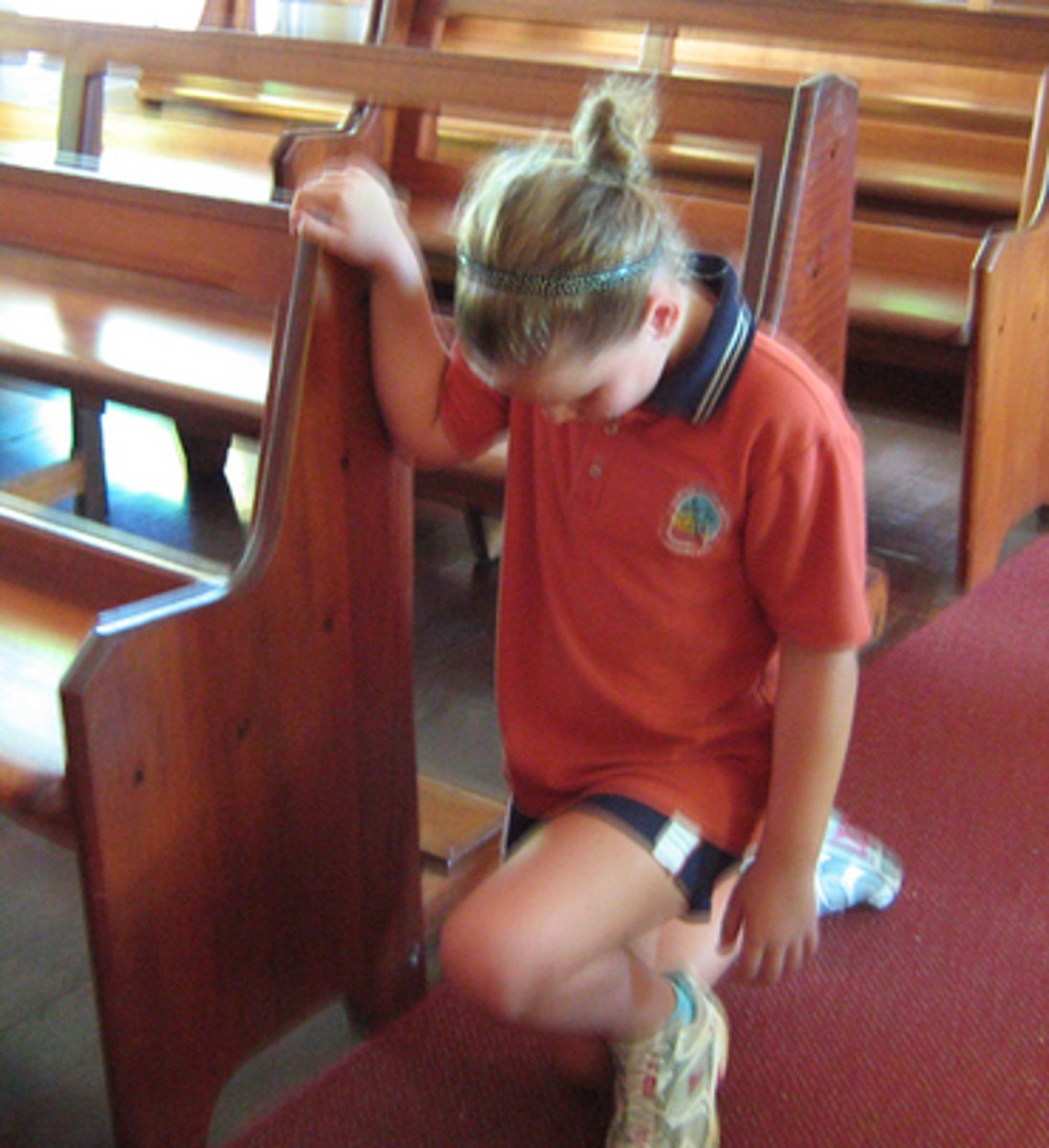
entrance procession (1. start of introductory rites)
(beginning of mass, from the back of the church to the altar) pilgrimage from this world to the Kingdom of Heaven; Christ lights the way for us.
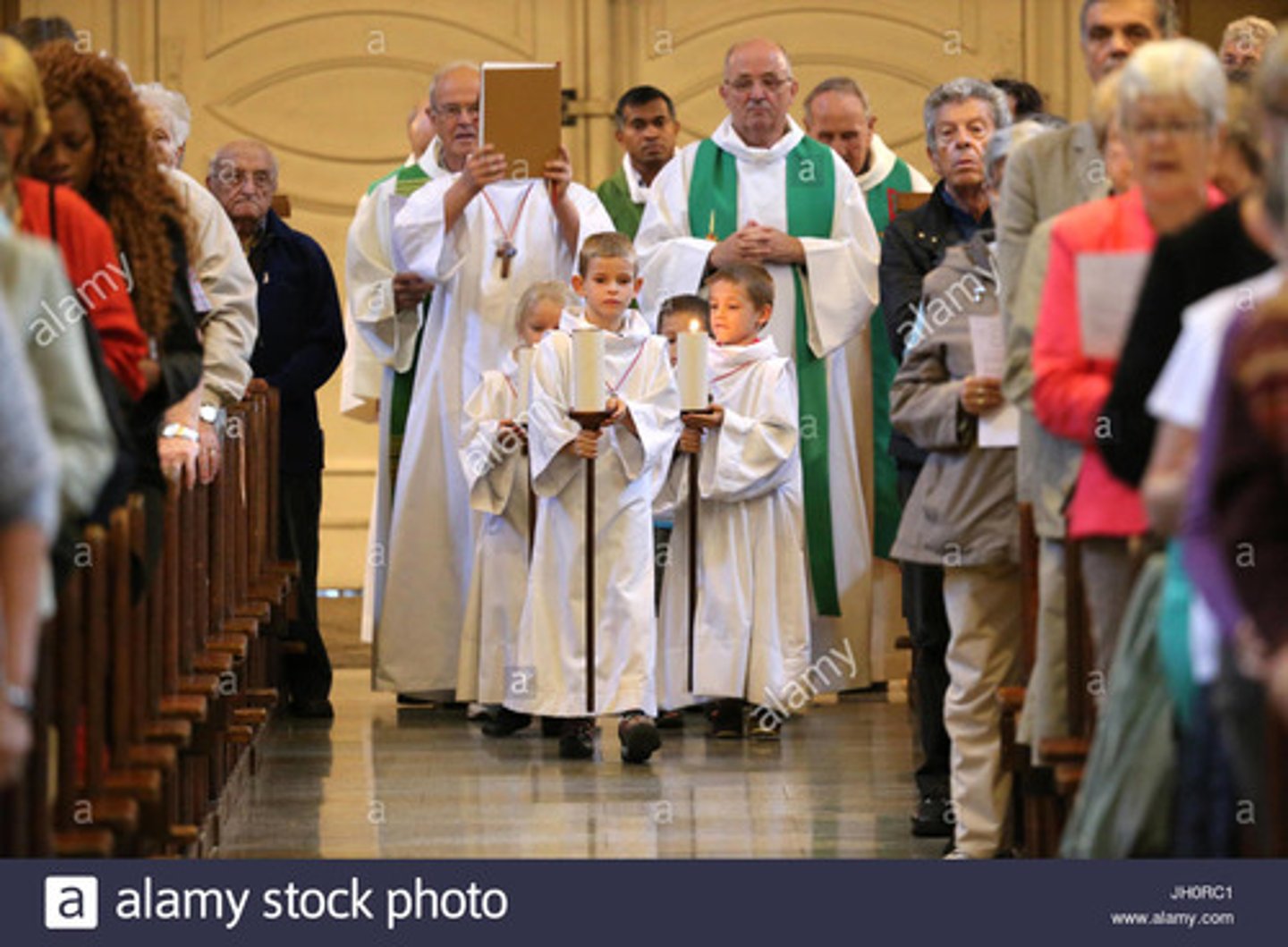
the priest's vestments
to camouflage their own bodies to reminds us all that it's Christ who is the center of the mass, not them.
amice (armor), alm (purity), cincture (chastity), stole (spiritual authority of the priest), chasuble (charity of Christ).
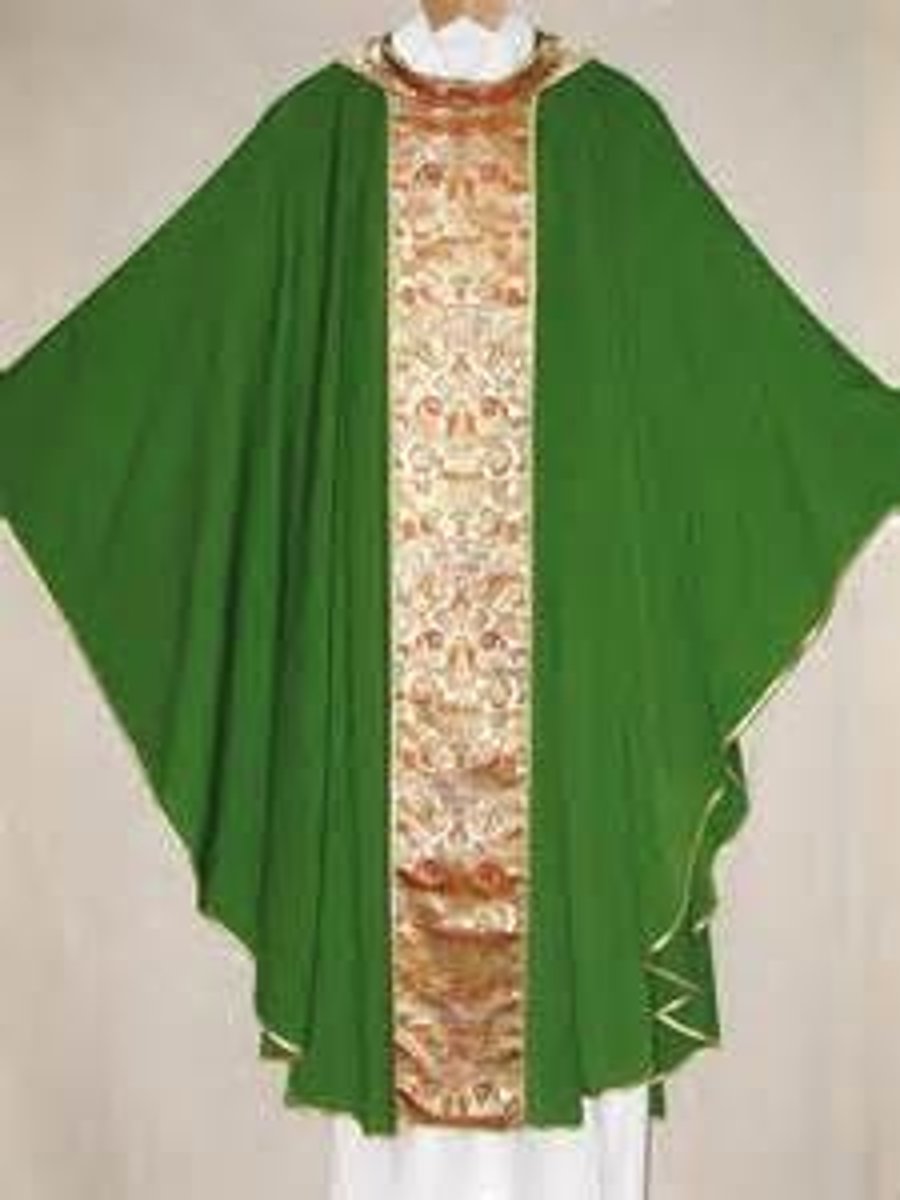
the entrance song (hymn/antiphon)
act of singing unites us as a faith community, awakening us as we invite the Holy Spirit to move in us; transition from death to life.
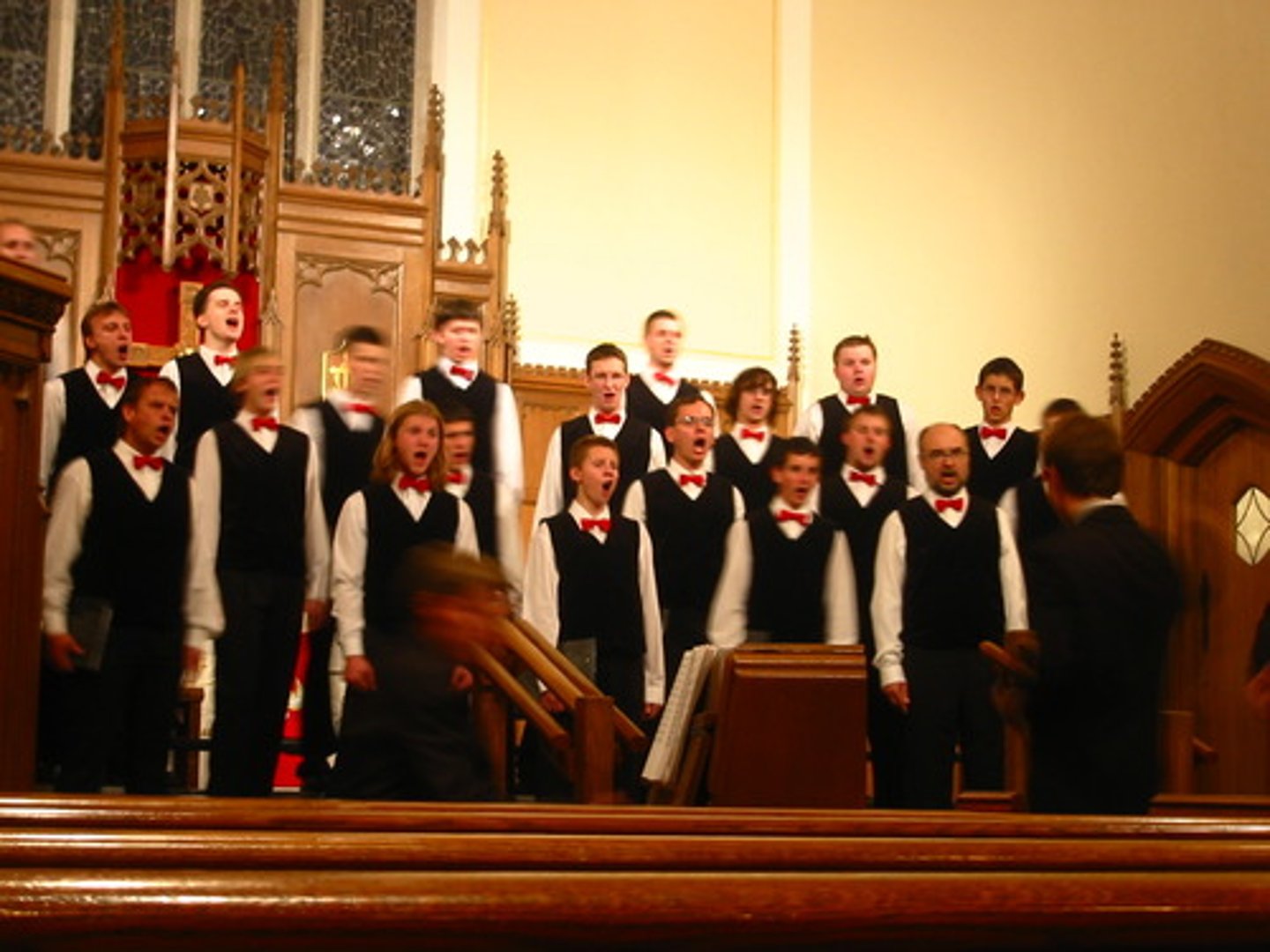
venerating the altar
how priests show their love/reverence/submission for Christ, mass is an encounter of love with Christ.
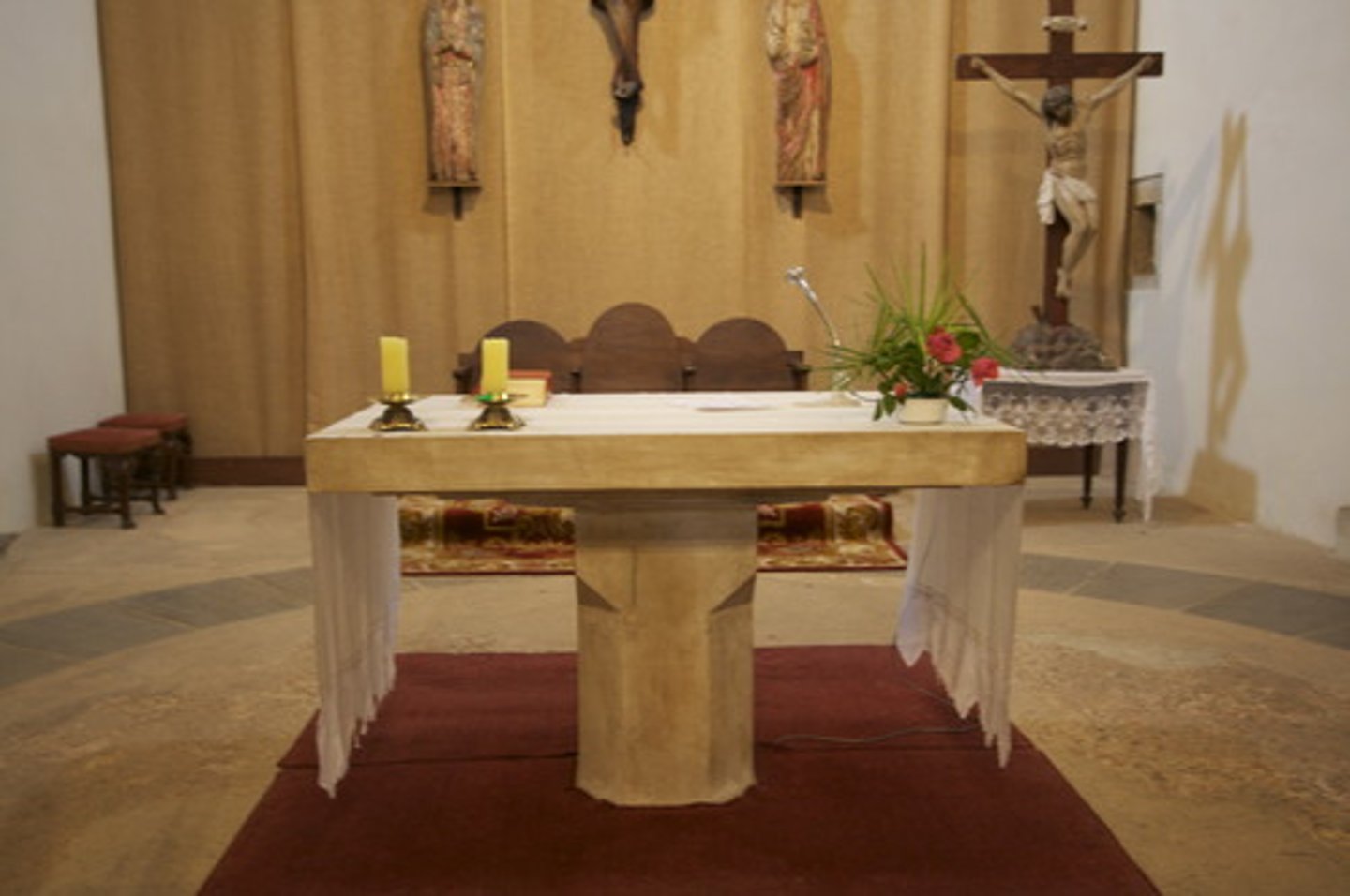
sacred vessels (items) on the altar
help point us to Christ, with his body and blood given to us; vested on the altar.
symbols of Chirst: white tablecloth, altar cross, crucifix, altar candles; mystery of the Eucharist.
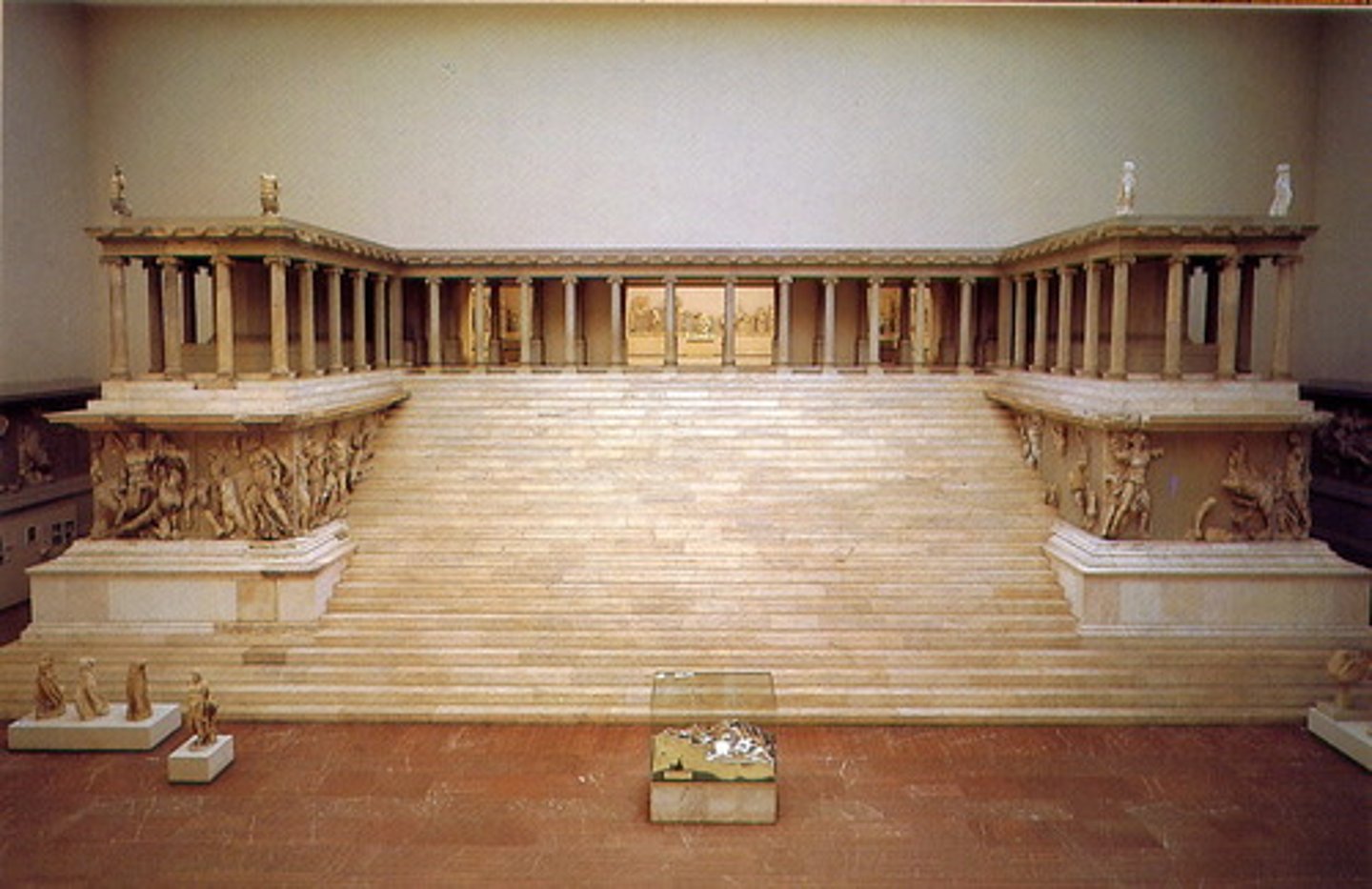
the sign of the cross
prayer that affirms our baptism, calling on His name as a reminder of our access to God; invitation.
Holy Trinity: God (heaven), son (human nature), Holy Spirit (power); incarnation through Jesus, love that flows, we believe.
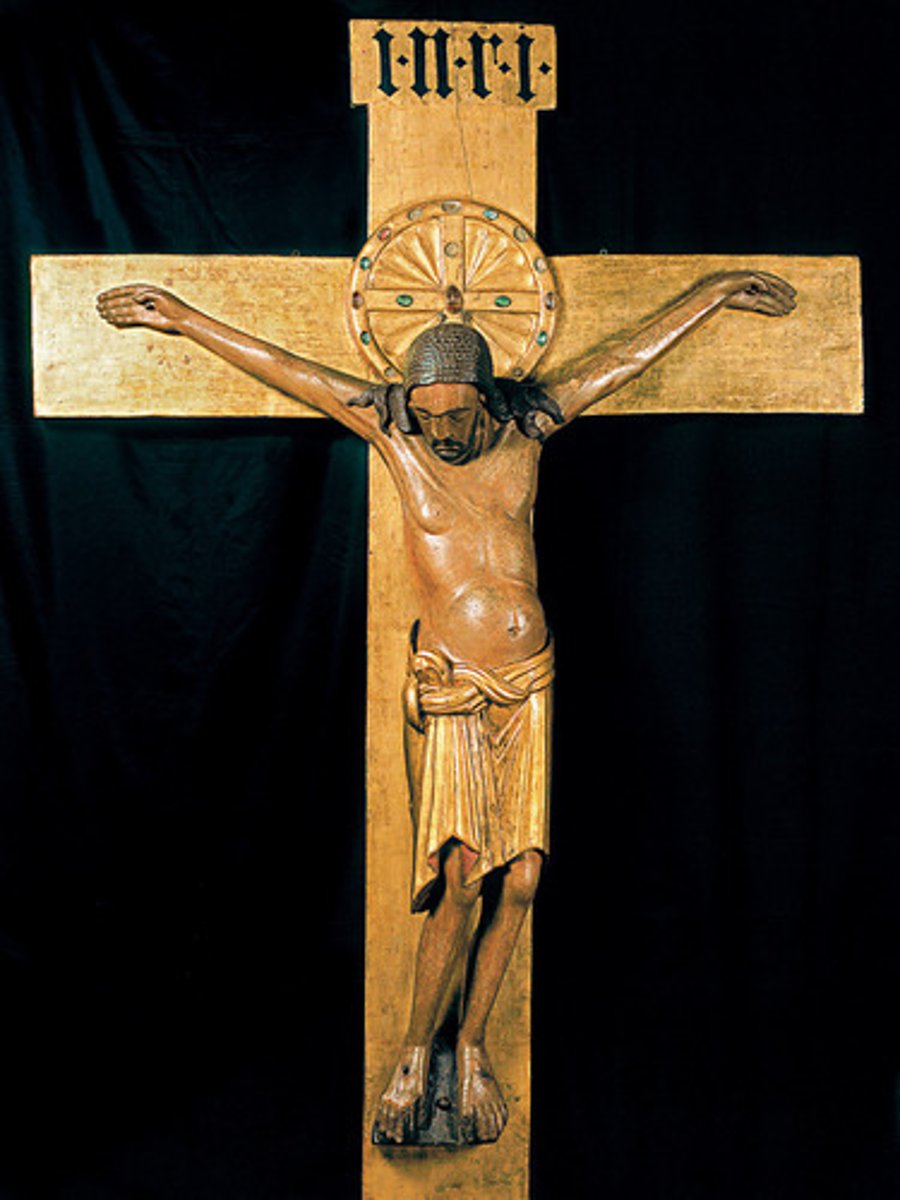
the greeting (from priest)
"The Lord be with you" draws our attention to the presence of the Lord; begins our gathering.
Response "and with your spirit" acknowledges/assures the priest that God's spirit is in him.
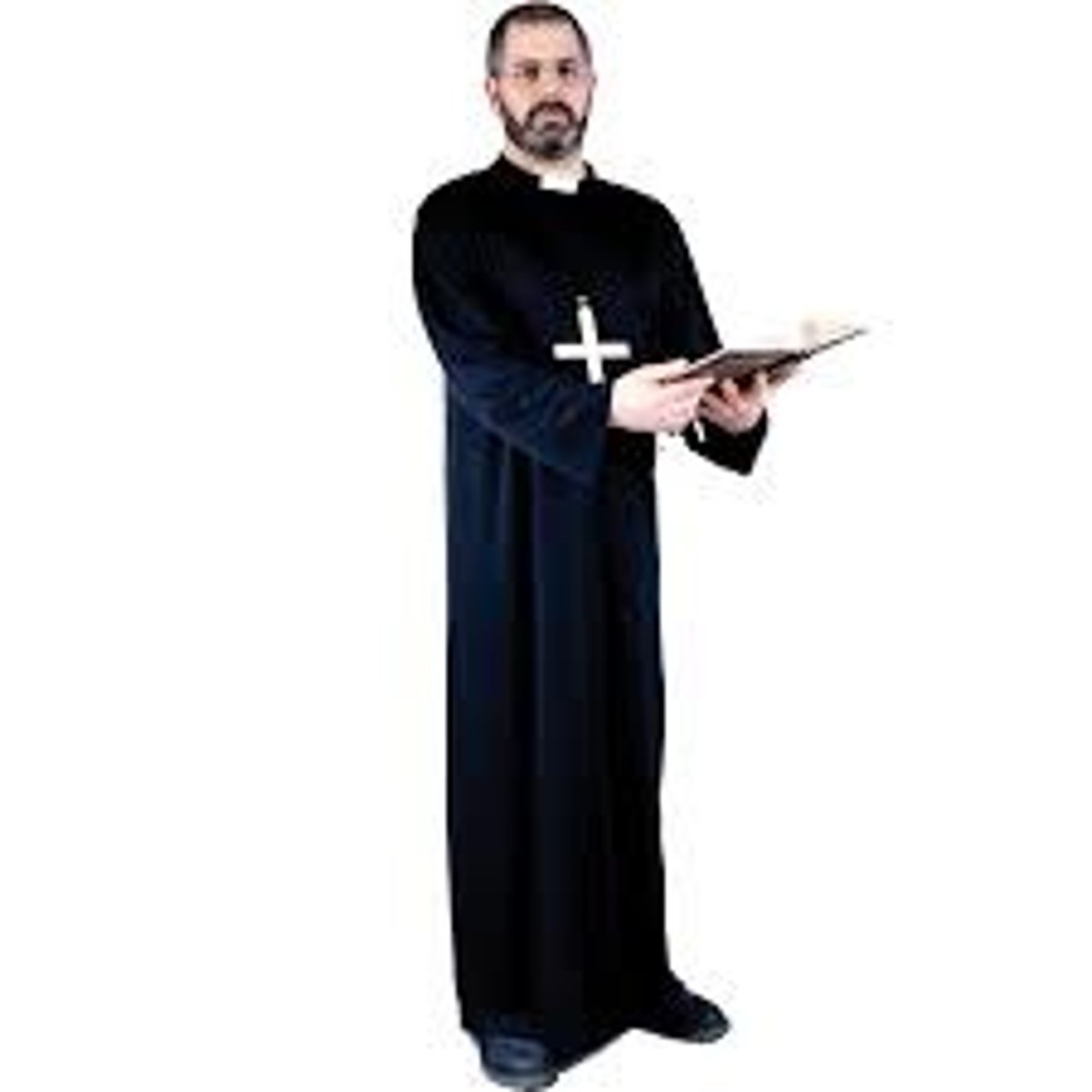
penitential rite
opportunity to publicly repent our sins so that the sacrifice of the mass may be pleasing to God.
prayer: things we thought, said, did, failed to do; unworthy of Go'd mercy.
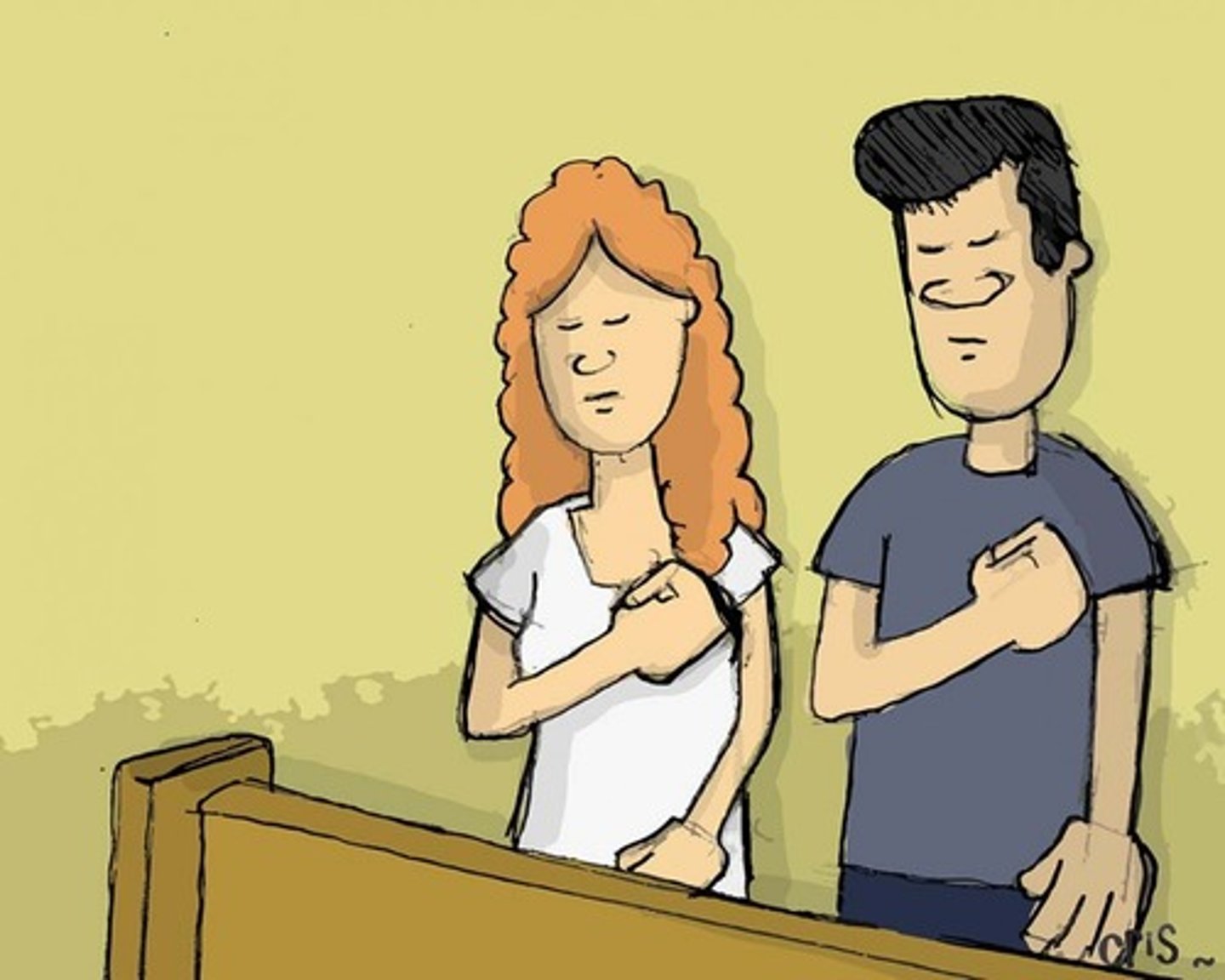
the gloria (prayer)
reminds us that we're called to praise/glorify the maker of our hearts and souls; celebrates Father, Son, Holy Spirit.

who is present at the mass?
mass: heavenly liturgy, angels and saints participate with us on earth to glorify and give thanks to God for all His gifts (especially of the Eucharist).
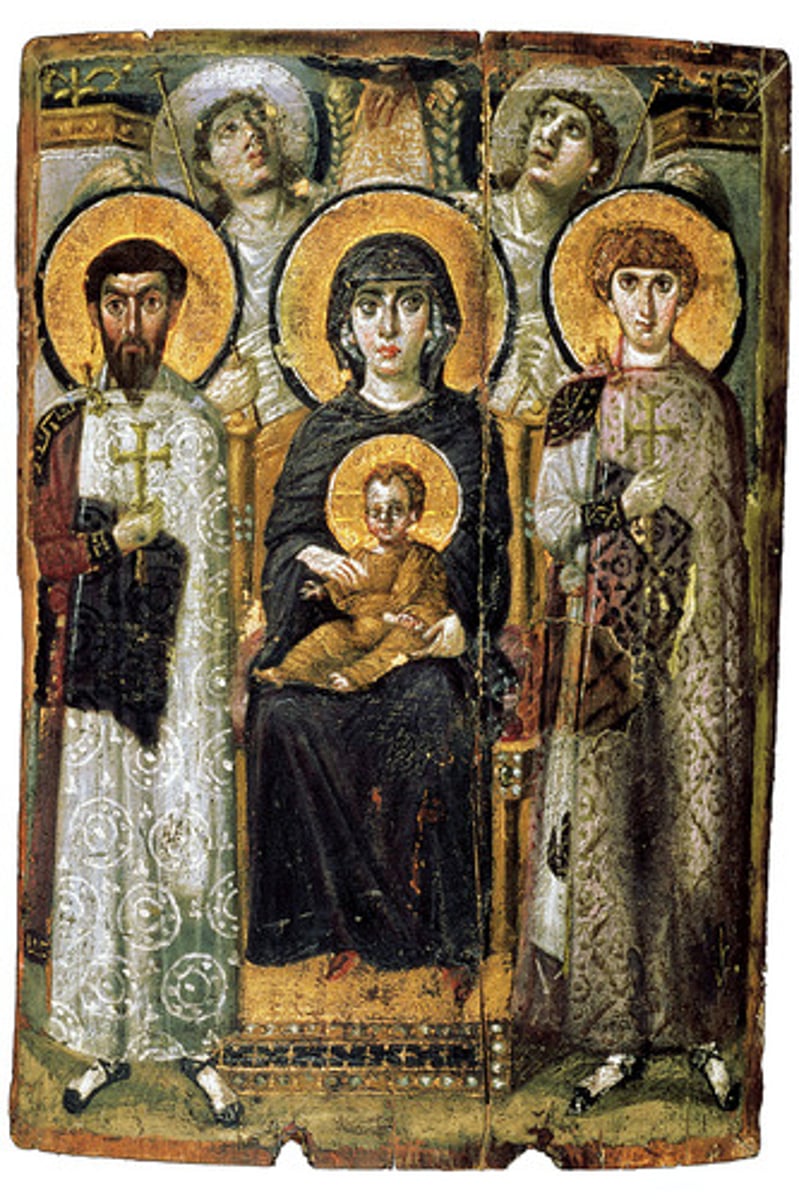
the collect (opening prayer)
gathers all the prayers of the people, priest then offers them to God the Father for this mass.
let us pray, moment of silence, orans position, congregation amen.
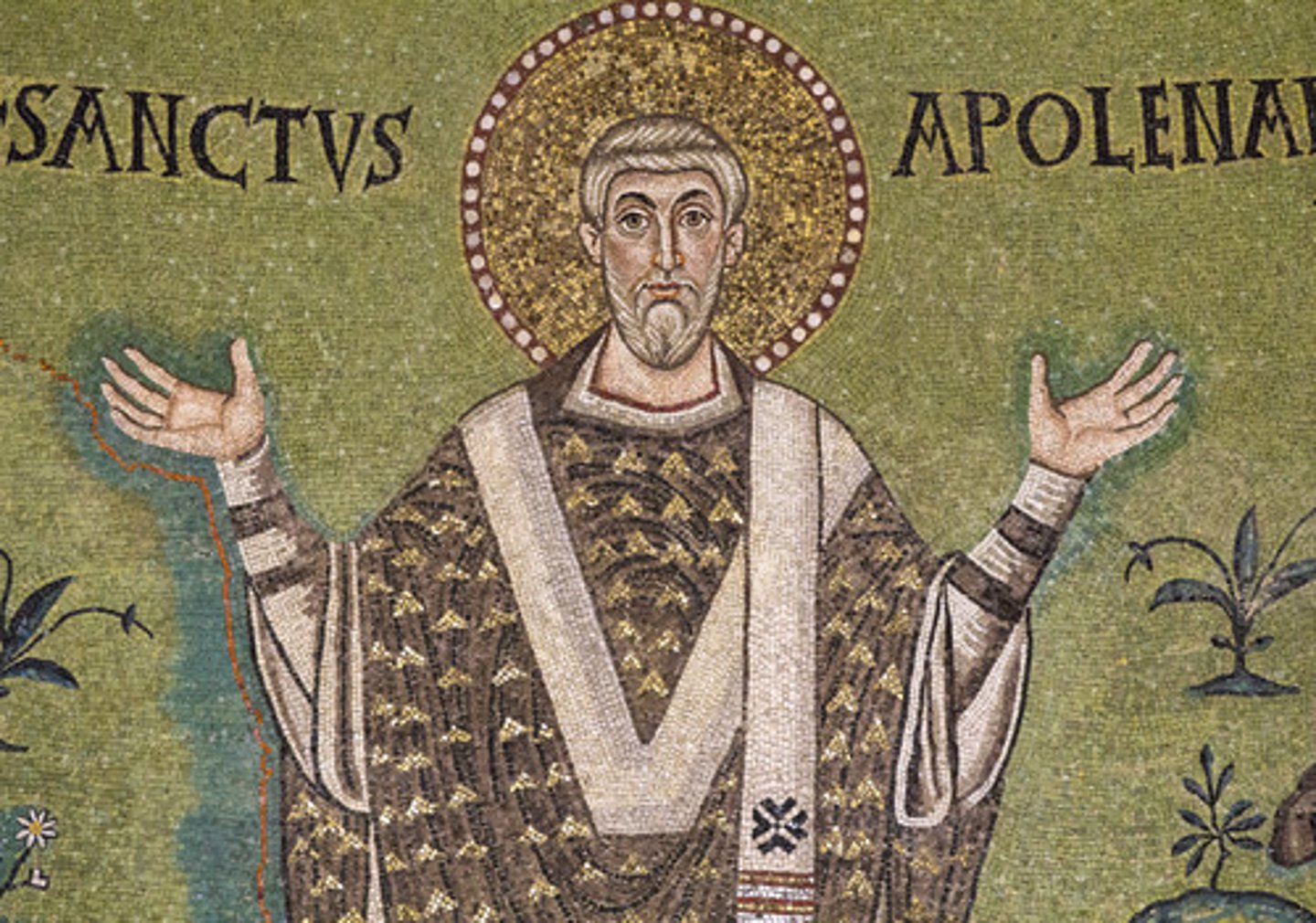
the ambo (platform) (2. start of the liturgy of the word)
sacred space where God speaks to us; scripture is read to proclaim God.
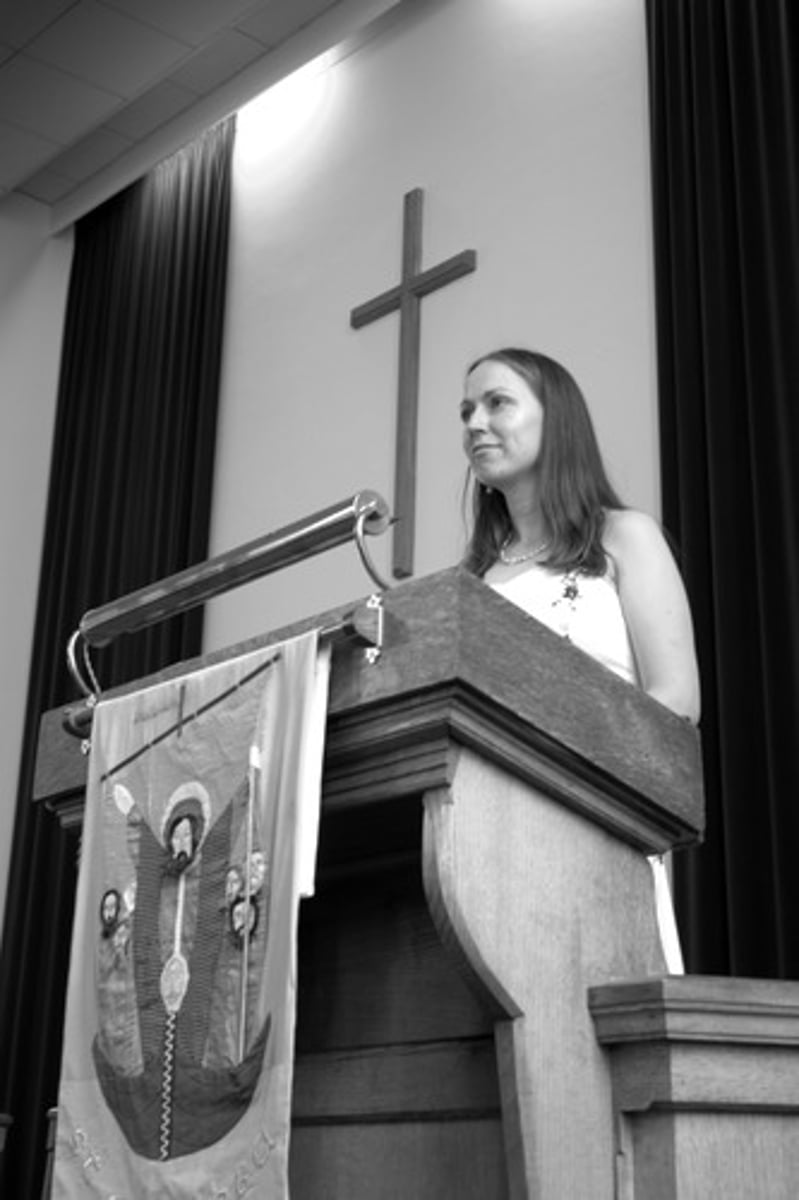
the roman missal and gospel book
roman missal: prayers, chants, and instructions for mass
gospel book: written account of Jesus' life and ministry
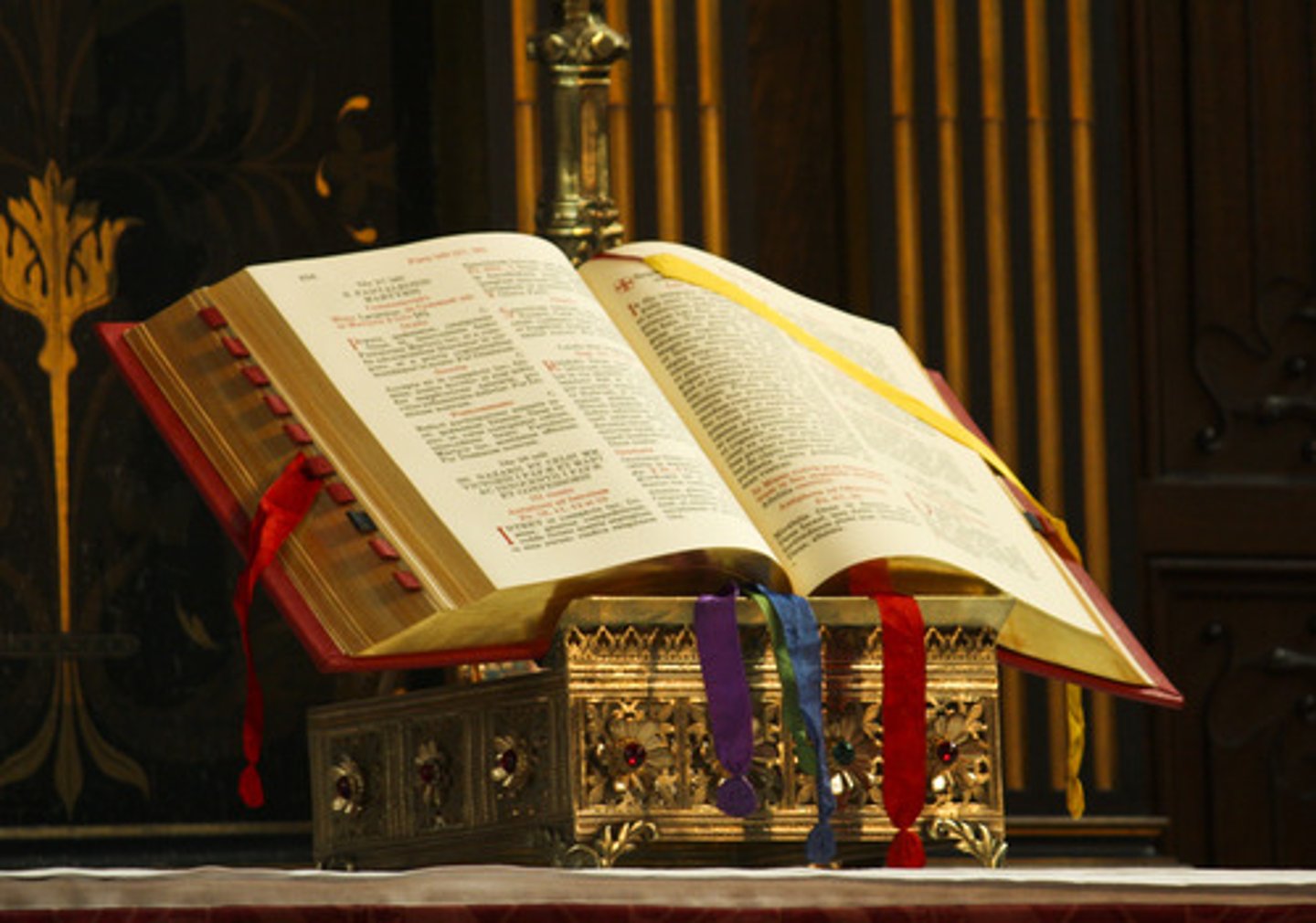
the lector
person appointed to be the voice through which God becomes present to us: spiritual, scriptural, and practical; printed word of God of life.
does not proclaim the Gospel!
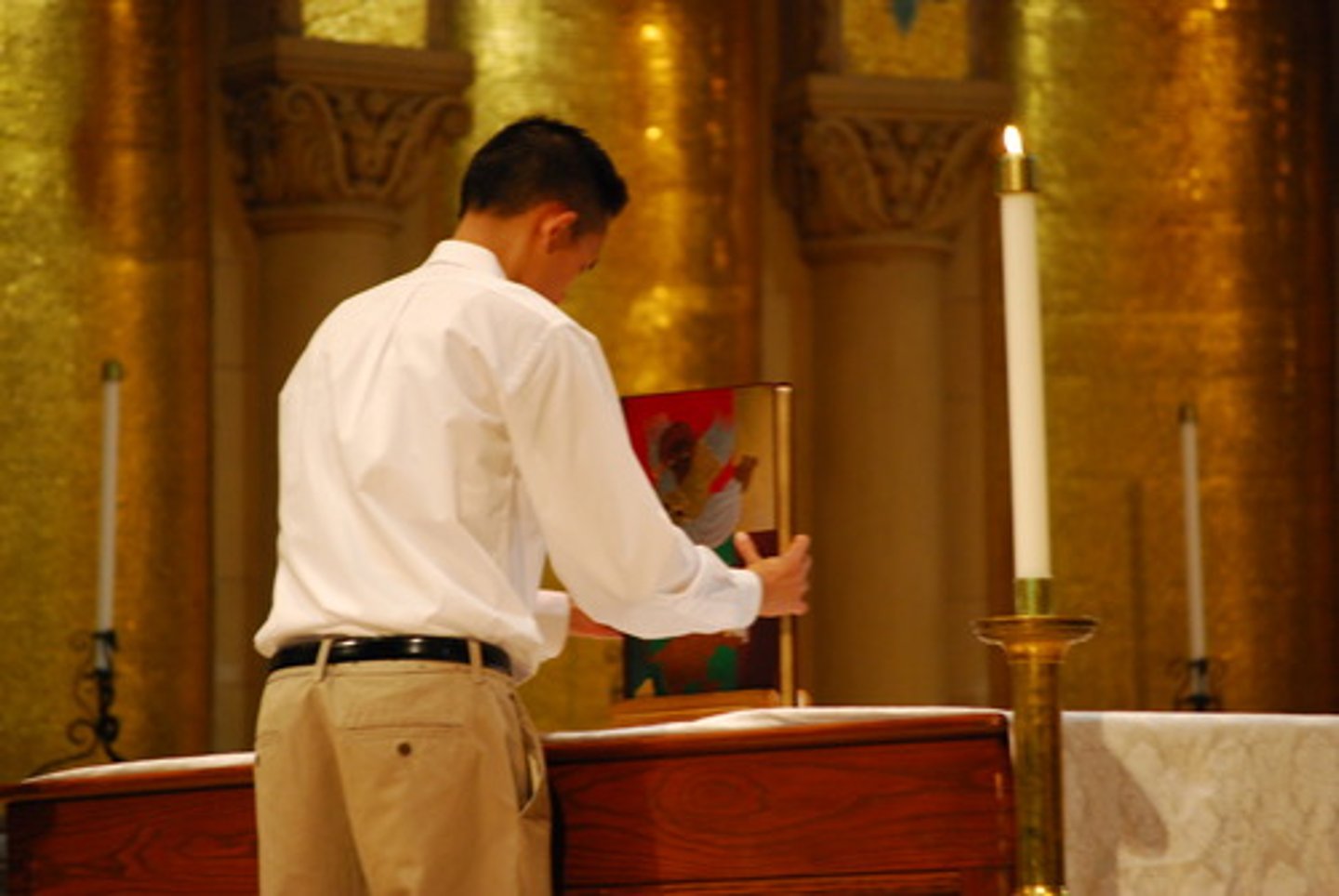
Liturgy of the Word
1st reading from Old Testament, 2nd reading from the epistles (letter written to an early church community, New Testament), and 3rd reading from the Gospel (Jesus).
Sharing of God's story of salvation.
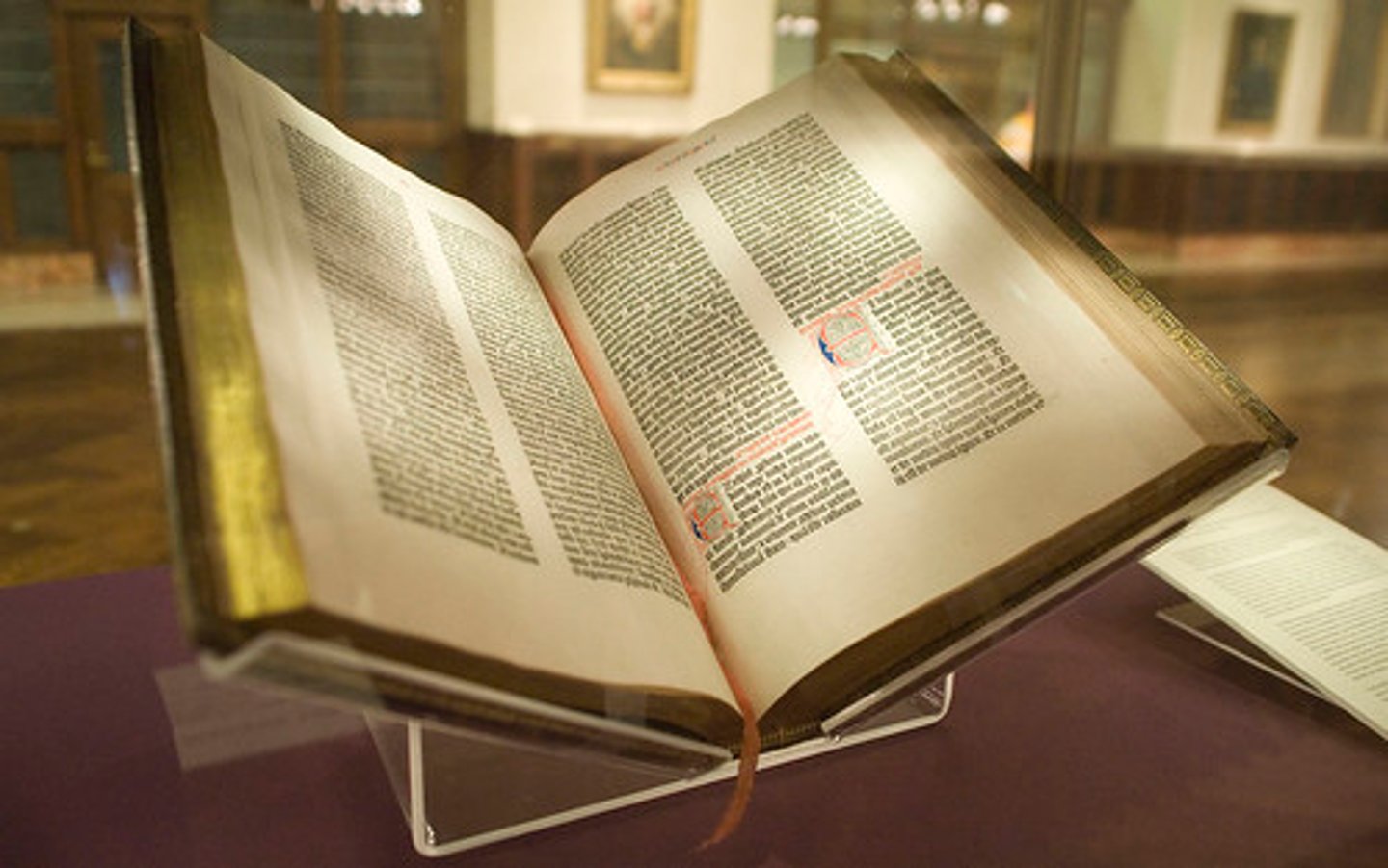
responsorial psalm
chance to respond to the Word of God from the first reading, invited as a community through meditative prayer; reflection, liturgical worship and forms.
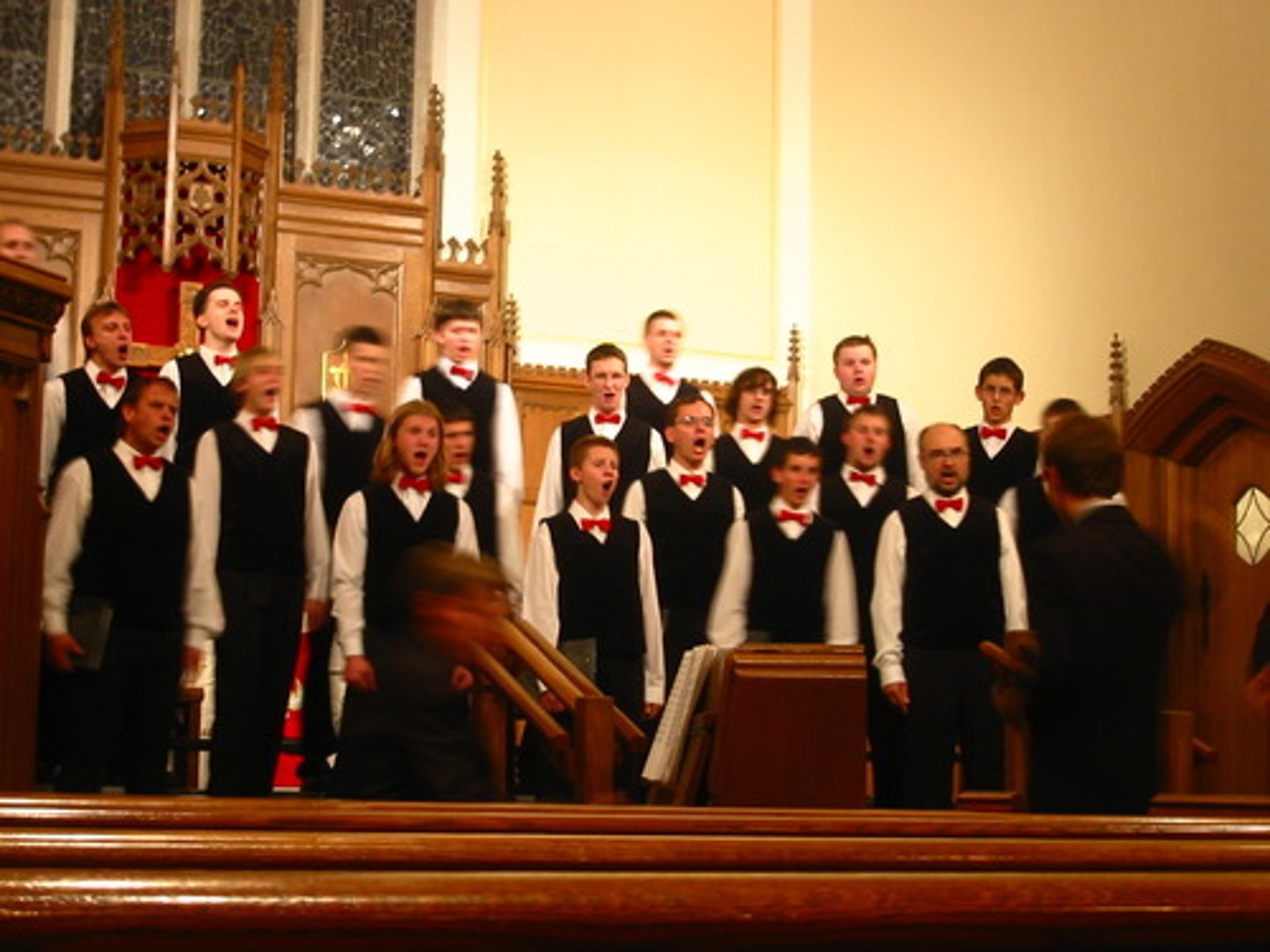
alleluia
"praise the Lord", faithful welcome/greeting to the Lord as we wait for Him to speak to us in the Gospel; while priest is processing from the altar to the ambo.

the gospel reading
assembly of the faithful stands as an act of reverence while we listen to God speaking to his people; high point of the Liturgy of the Word, anticipating the proclamation of the Good News.
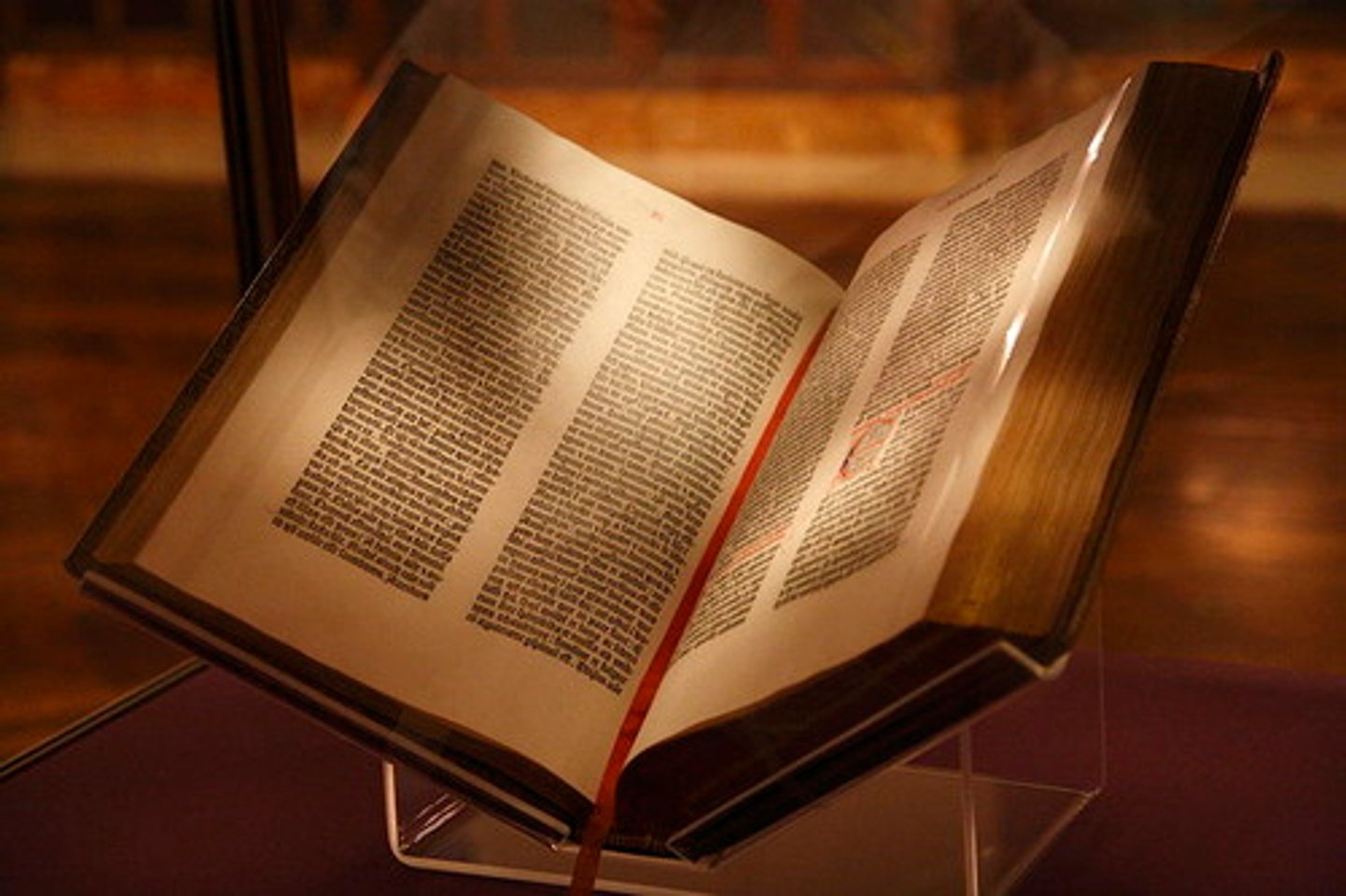
the 3-cross prayer
little signs of the cross before Gospel is proclaimed: asking the Word of God to pierce our mind (forehead), lips, and hearts.
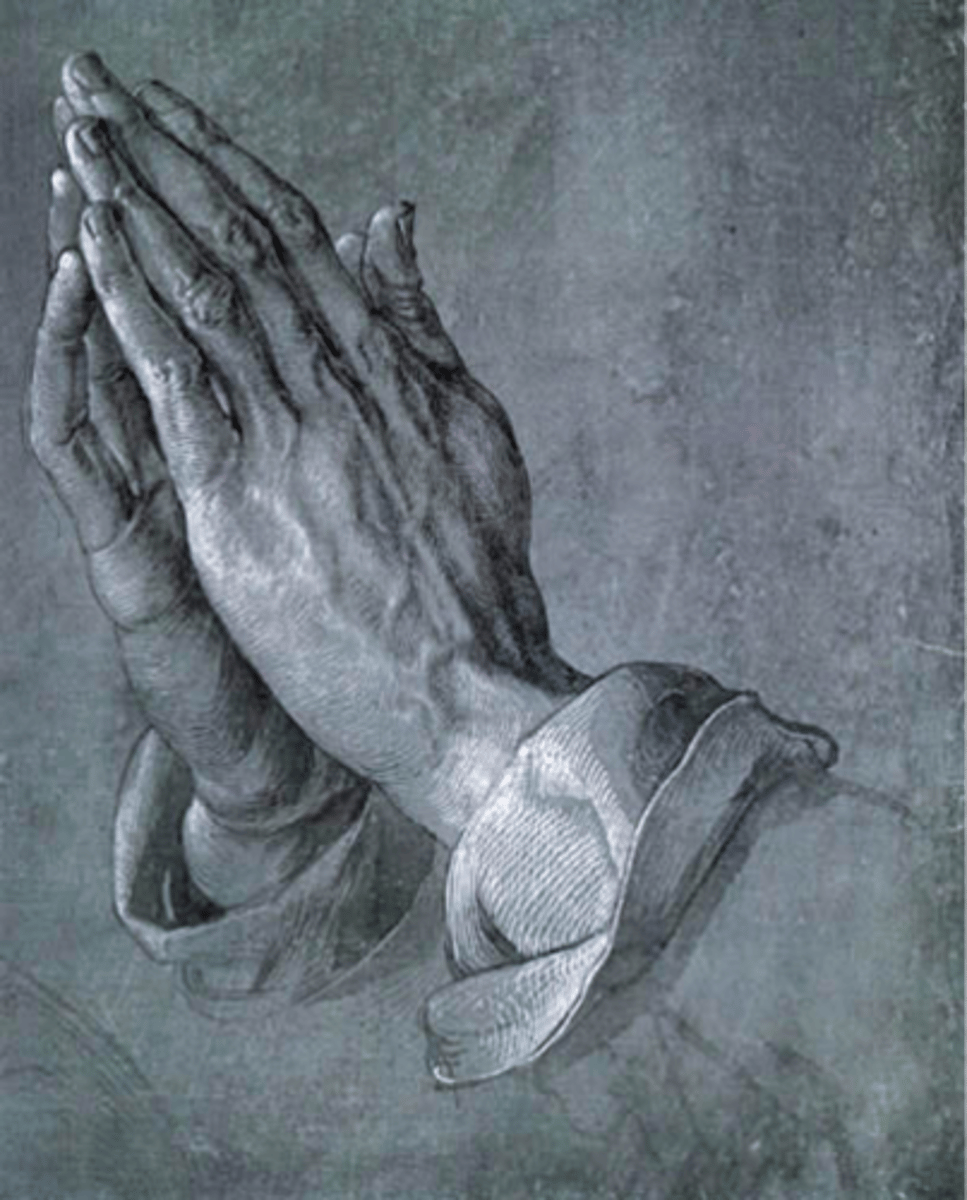
the homily
gives us insight into the Scripture's meaning, relates it back to our daily lives to learn how to become more like Christ.
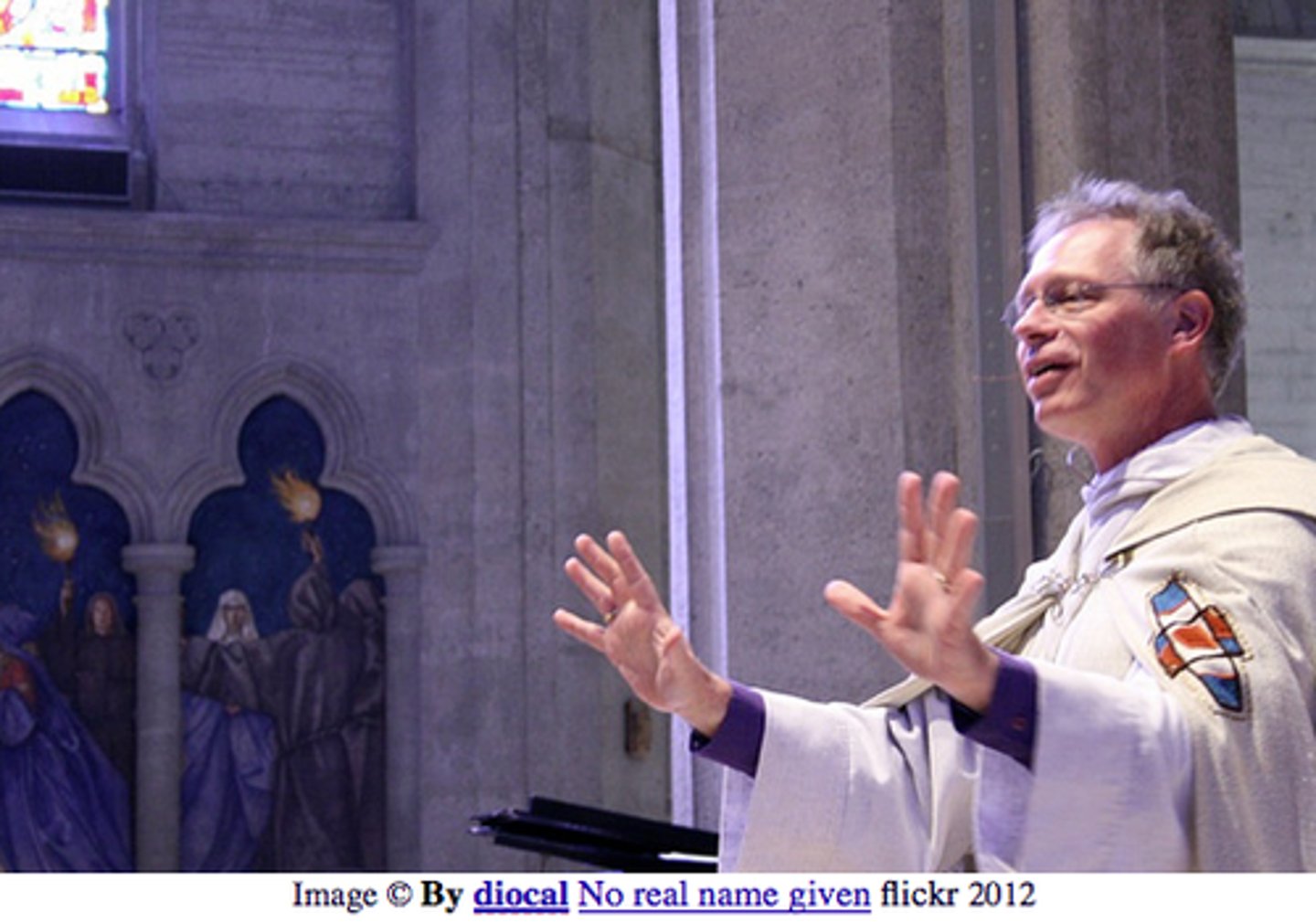
the profession of faith (nicene creed)
prayer stating our beliefs as Catholics, in God (children of the creator), Jesus (incarnate of Virgin Mary), the Holy Spirit (unites Father and Son, transforms us through baptism), and One Holy Catholic Apostolic Church (connects us across the world).

the prayer of the faithful
4 intentions: church's needs, public authorities and salvation of the world, for those burdened by difficulties, and local community; also personal intentions.
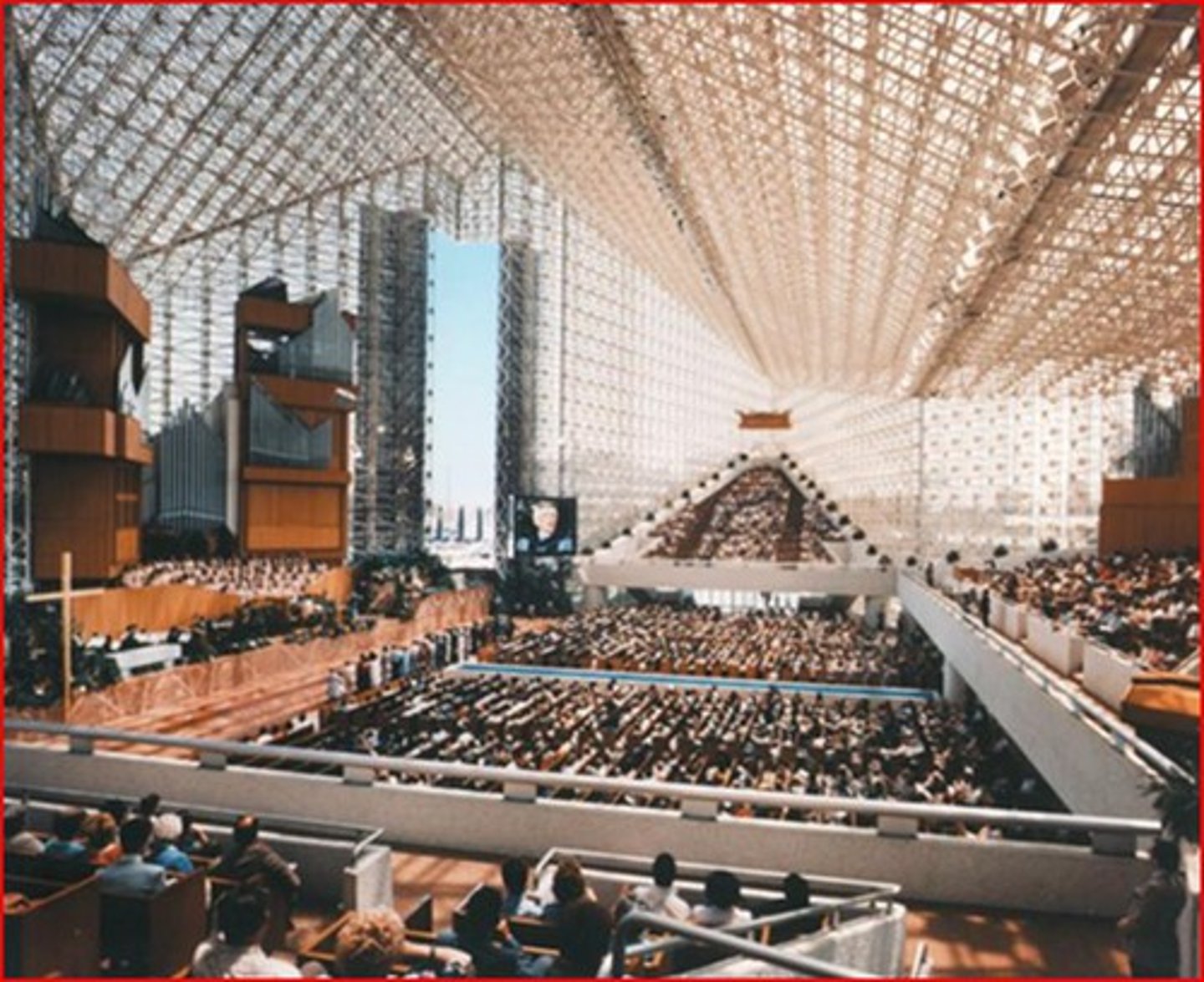
preparation of the altar (3. start of the liturgy of the eucharist)
altar is central point of mass, special care to prepare it with sacred vessels/articles to hold the Eucharist, most blessed sacrament.
corporal (cloth), purificator (narrow cloth), chalice (holds wine), paten (holds host bread) ciboria (additional hosts); made of precious metals.
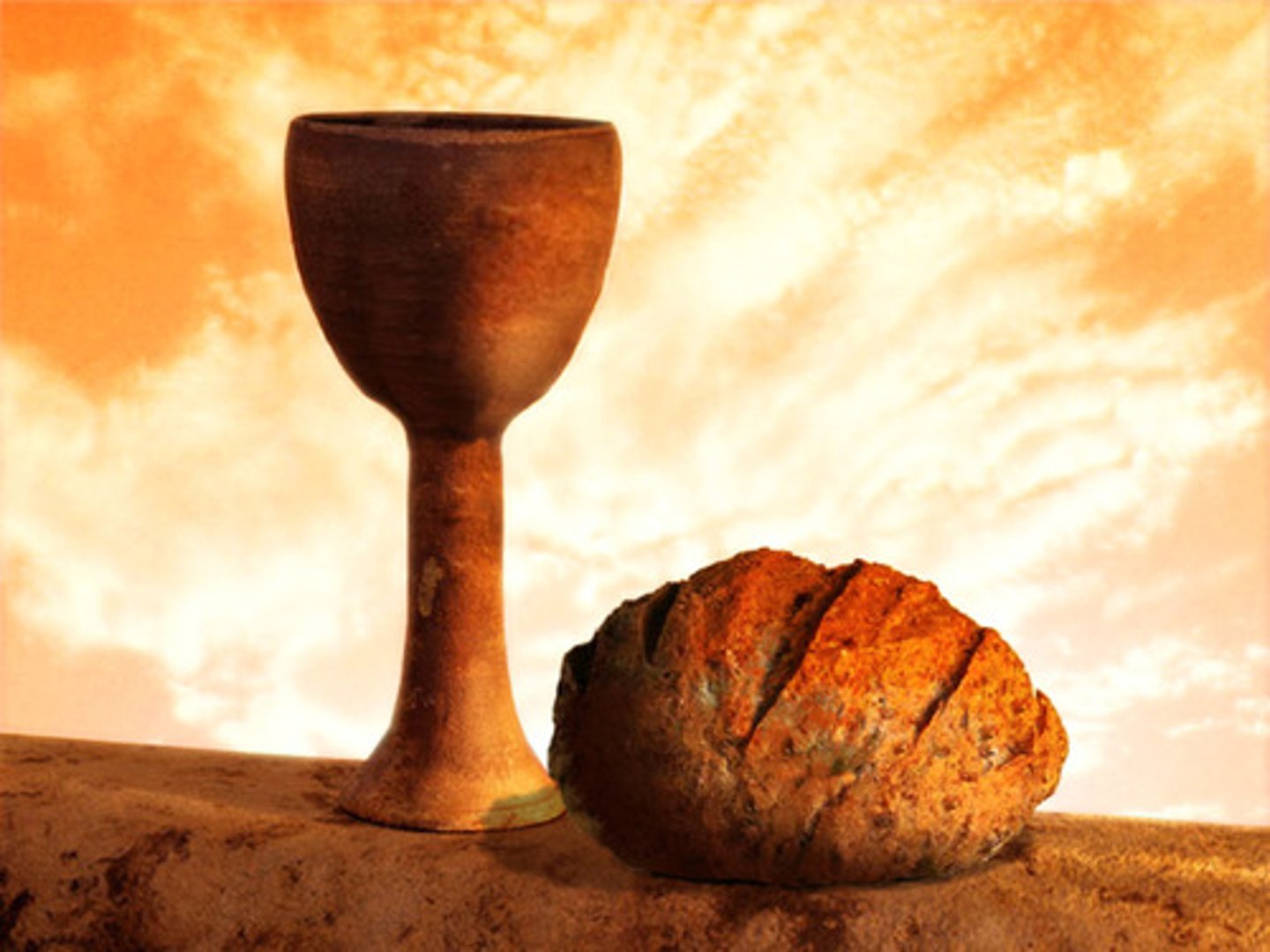
altar servers
called to directly serve God, then to help the clergy, then to assist the faithful in worship.
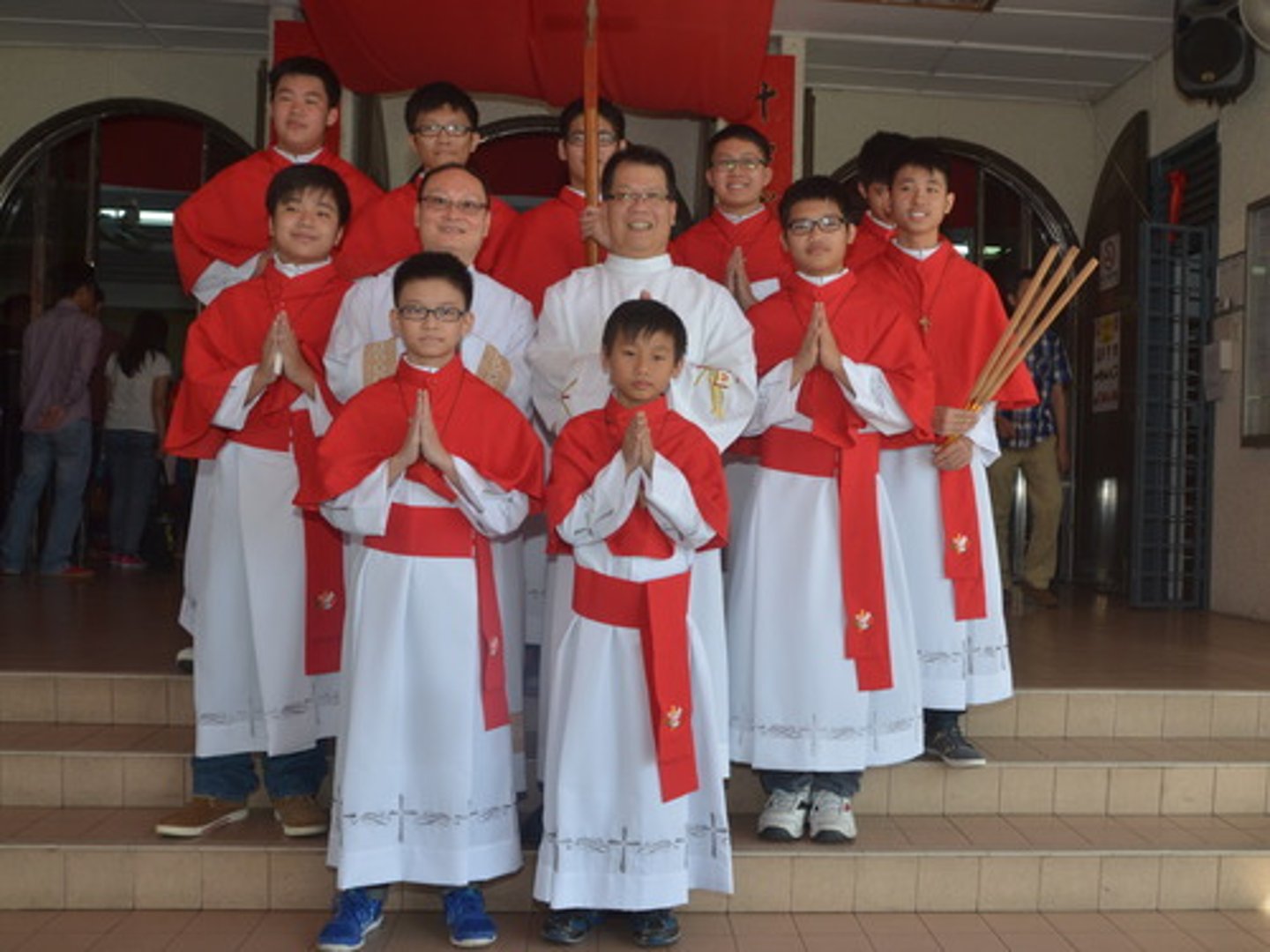
the presentation of gifts
the people's offering for the Holy Sacrifice, priest prays over the gifts, sanctifying them, acknowledging their worthiness in God's eyes; offering ourselves, the fruits of our labor, offertory sacrifices.
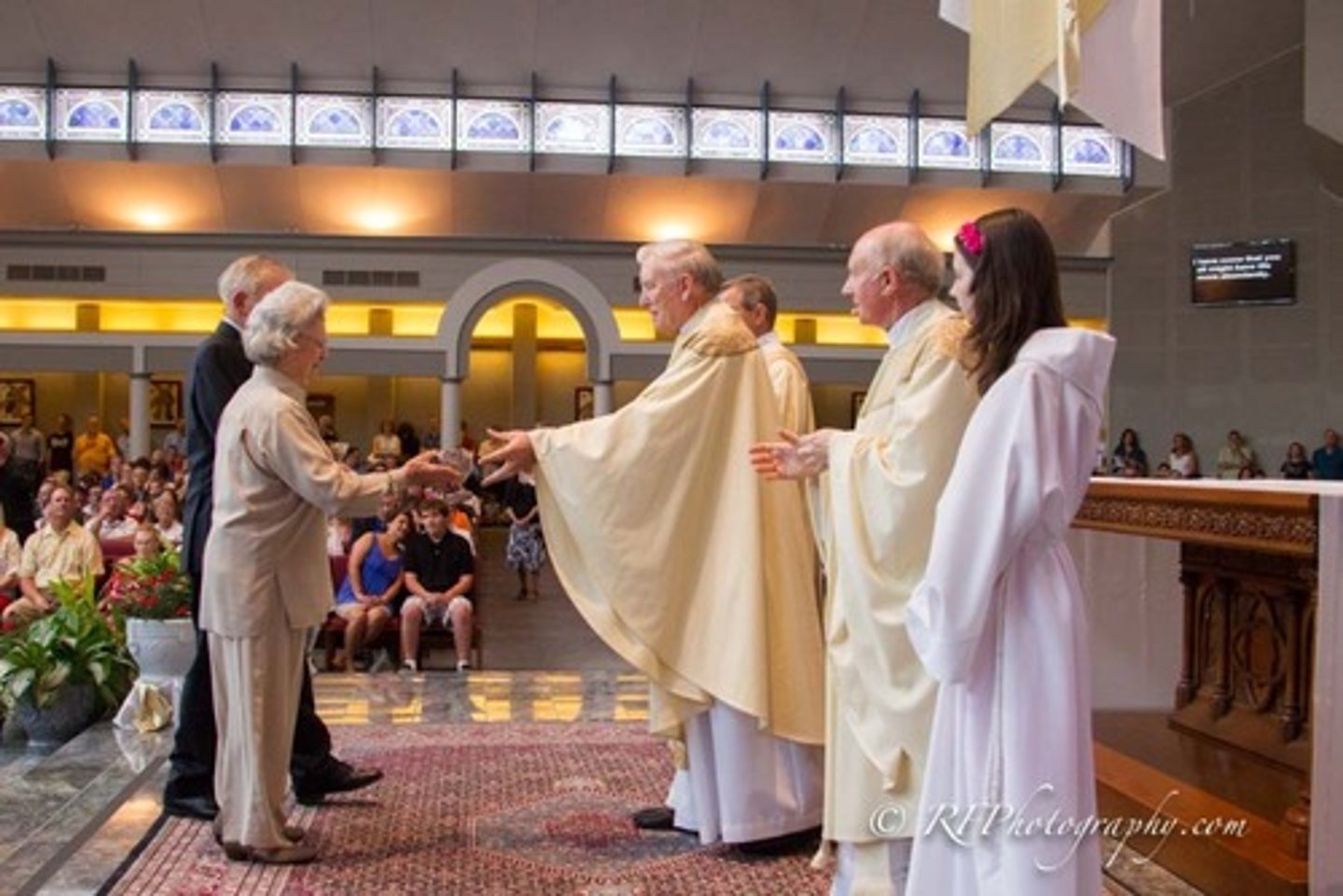
preparation of the bread
bread consecration: offertory prayer, asking God to receive it to be sanctified and made holy; holds paten up to be true body/blood of Christ.
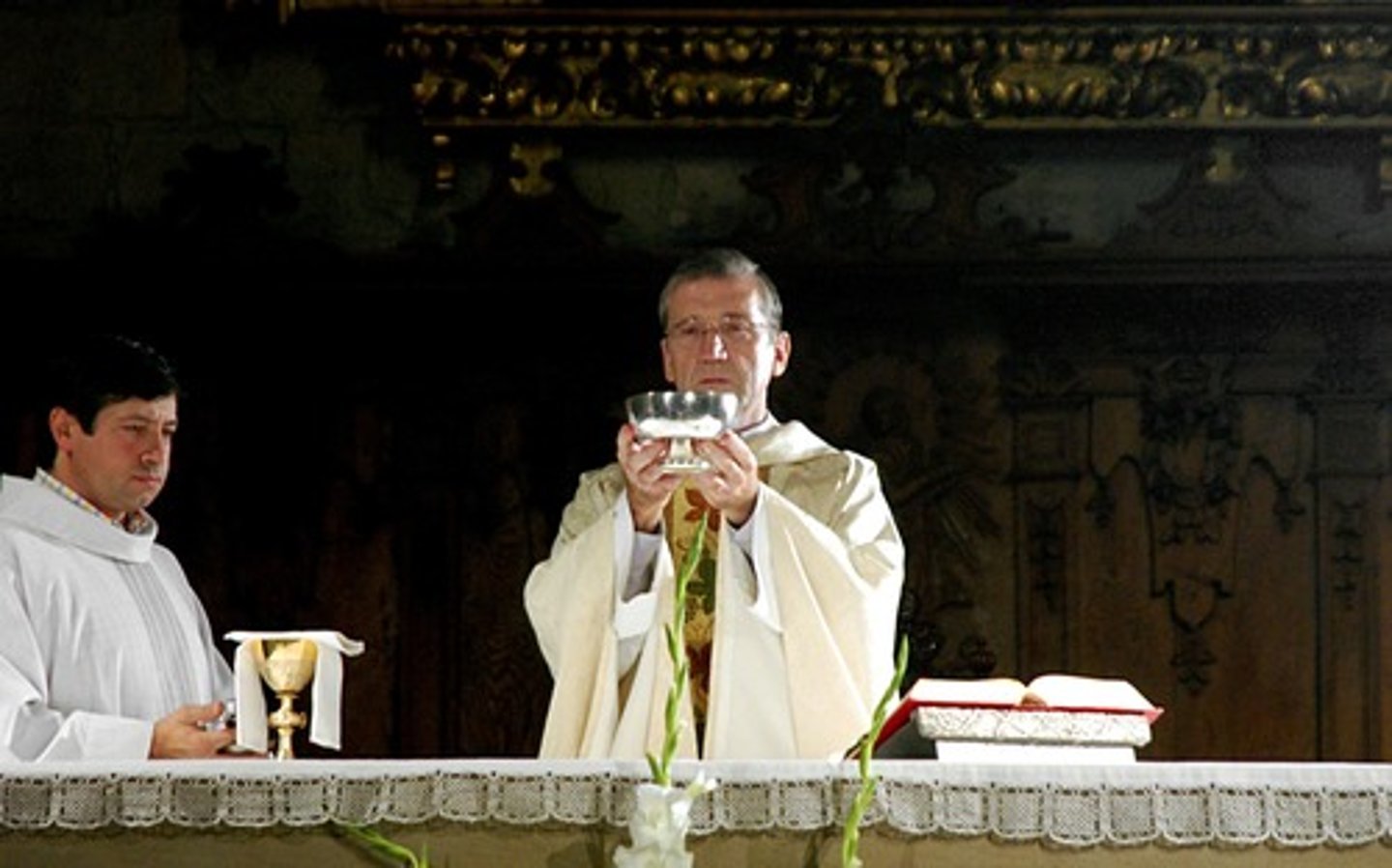
preparation of the wine
water represents Jesus' humanity and the wine his divinity, mingling of both in the chalice symbolizes Jesus' incarnation and our human participation with Christ; pure 'sacramental' wine, unity and elevated to the divine.
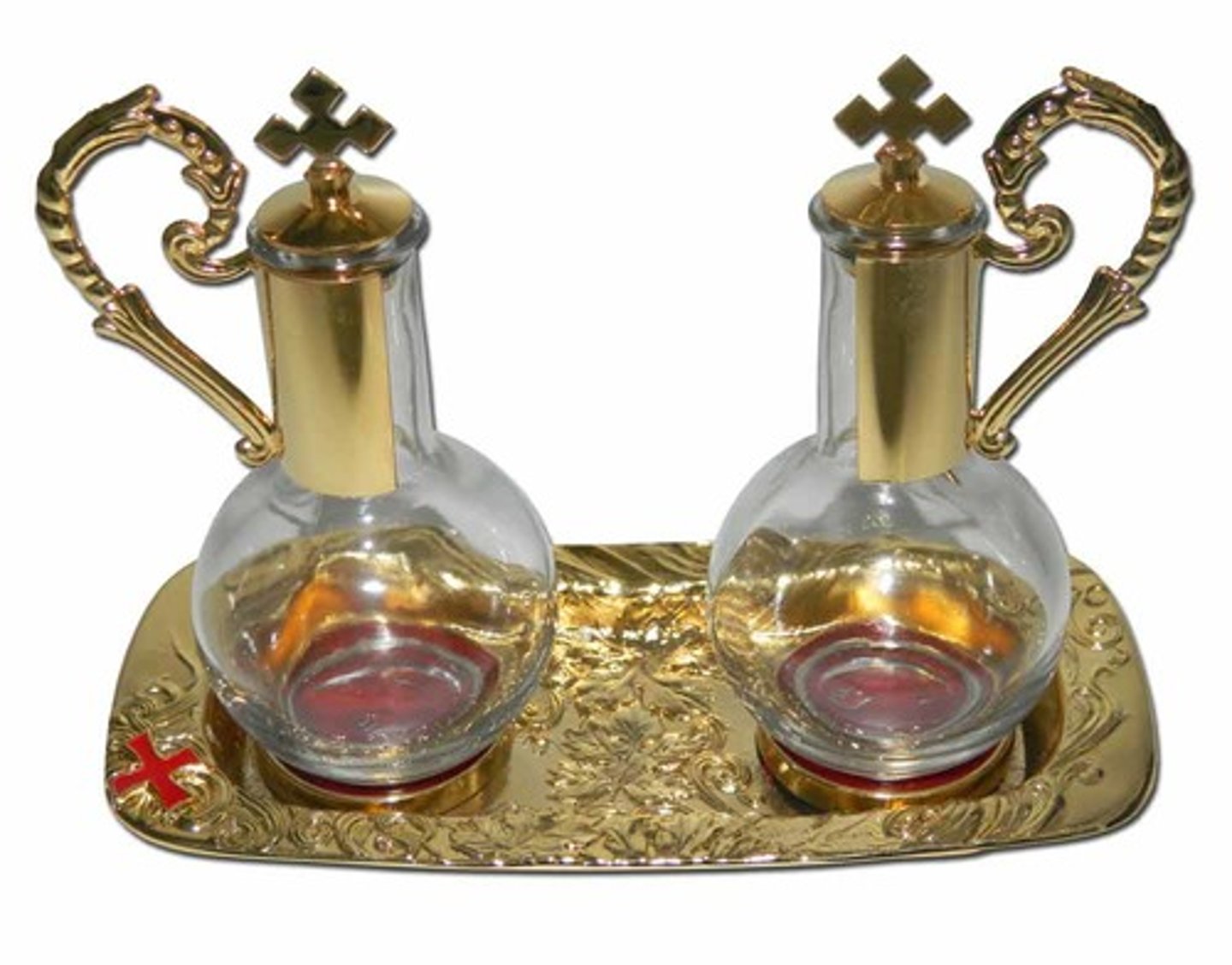
washing of the priest's hands
priest reminds himself of his own sinfulness and need of healing, cleansing of his soul to undertake the Holy task of holding the body/blood of Christ; purification.
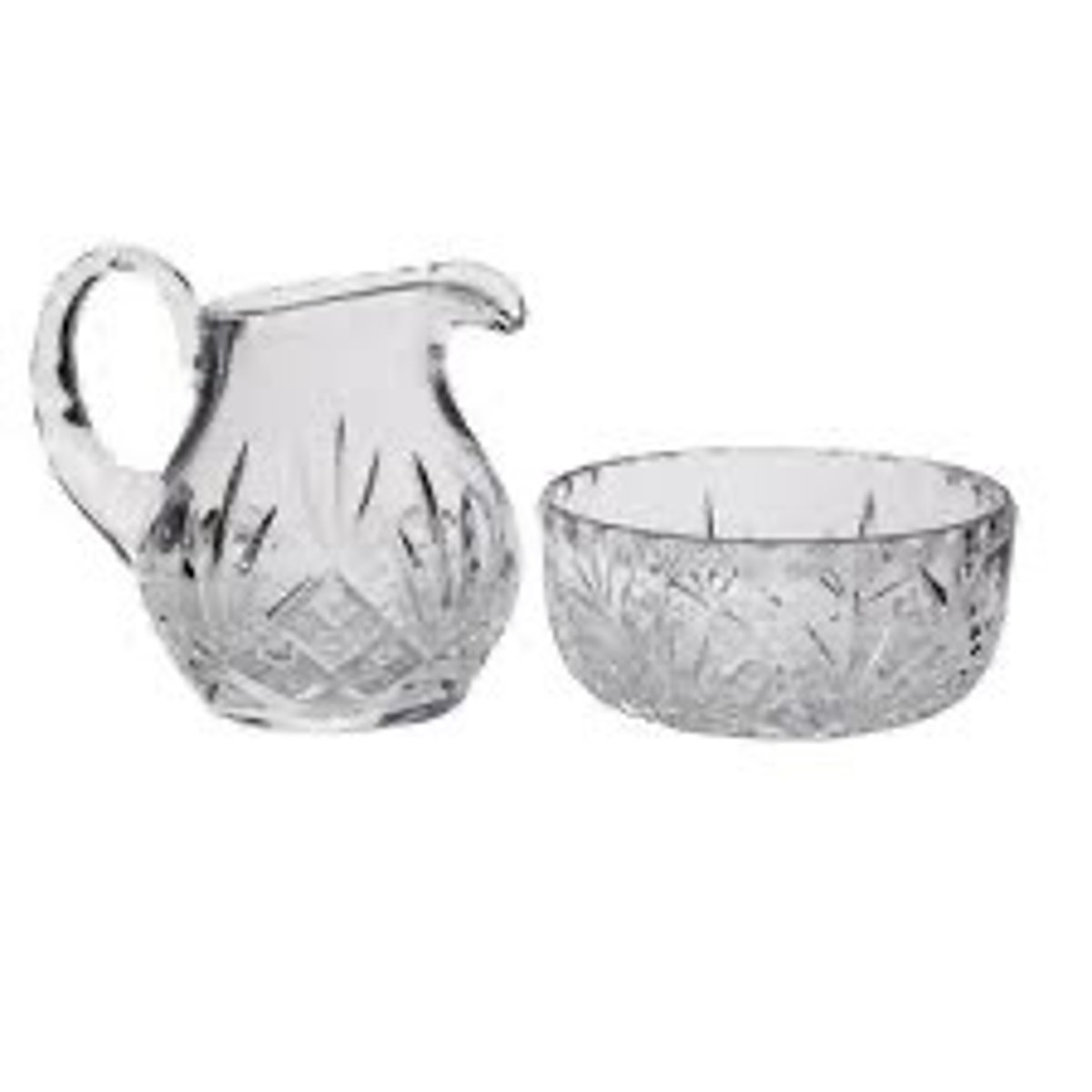
prayer over the offerings
prays over united offerings to give thanks to the Lord for these gifts, by his grace will be transformed into the body/blood of Christ.
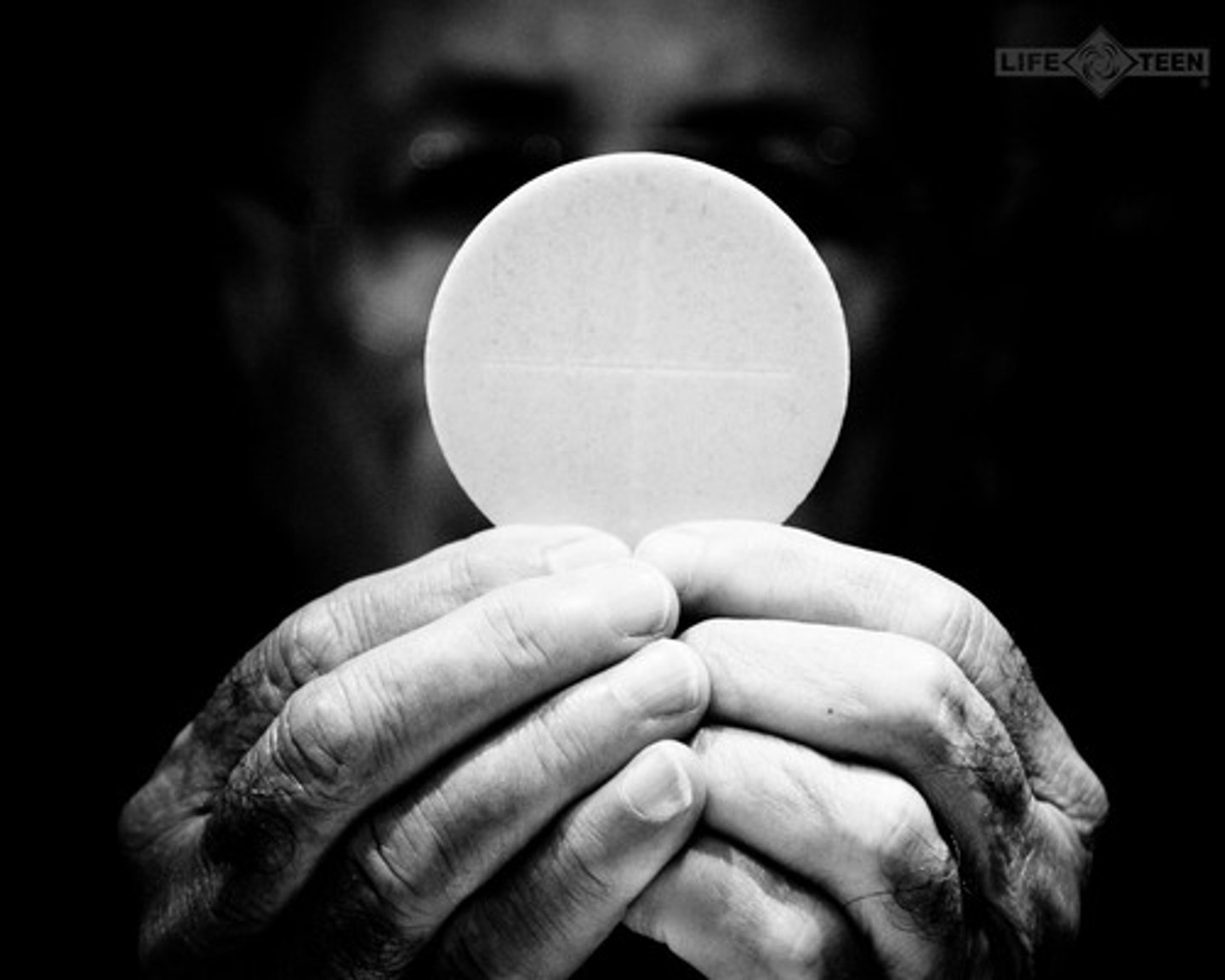
the preface - (people's dialogue)
tells of God's wonderful actions throughout history and in our lives, opportunity to thank God before receiving his gift of the body/blood in the Eucharist; call and response.
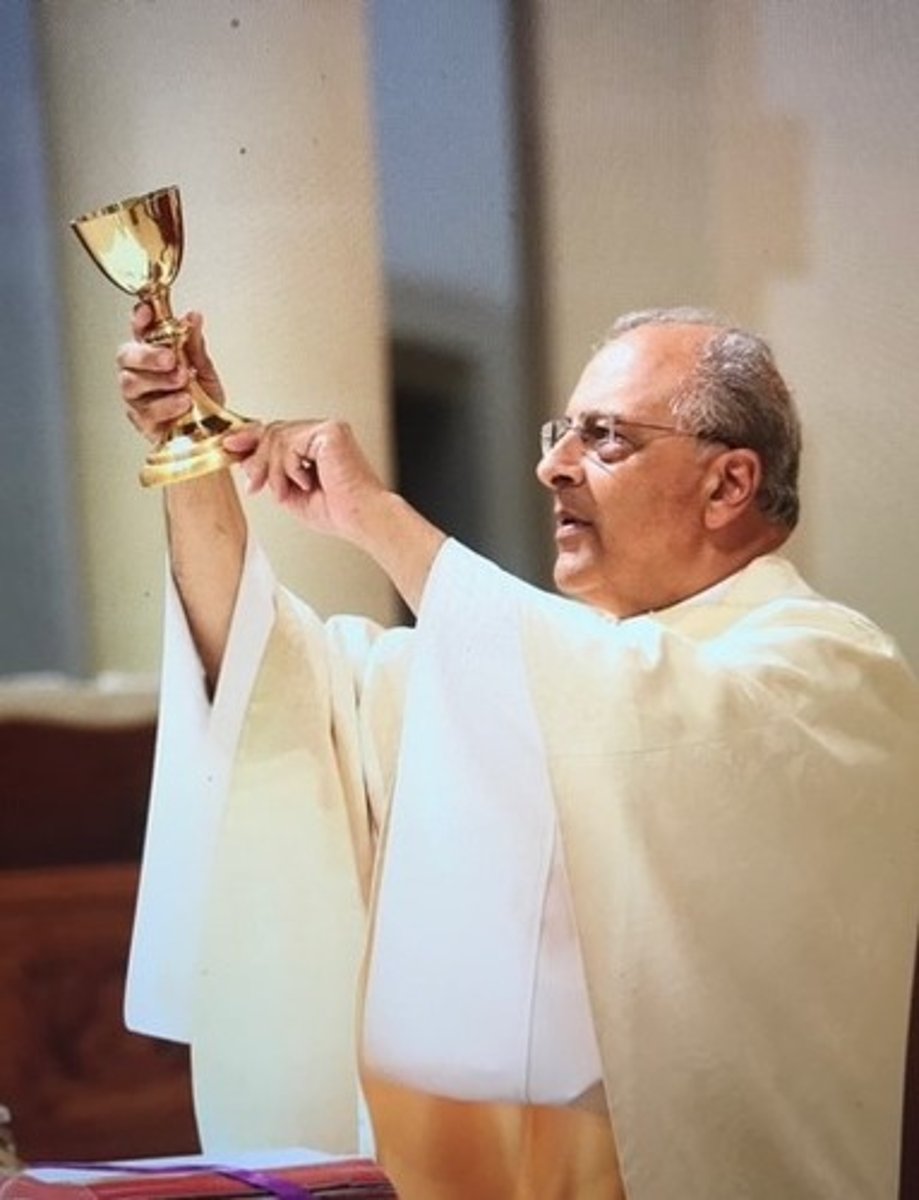
the preface - (the priest's prayer)
reiterating the people's response in the dialogue, ends with a specific intention related to the liturgical time of the year; specific way God is guiding us through mass.
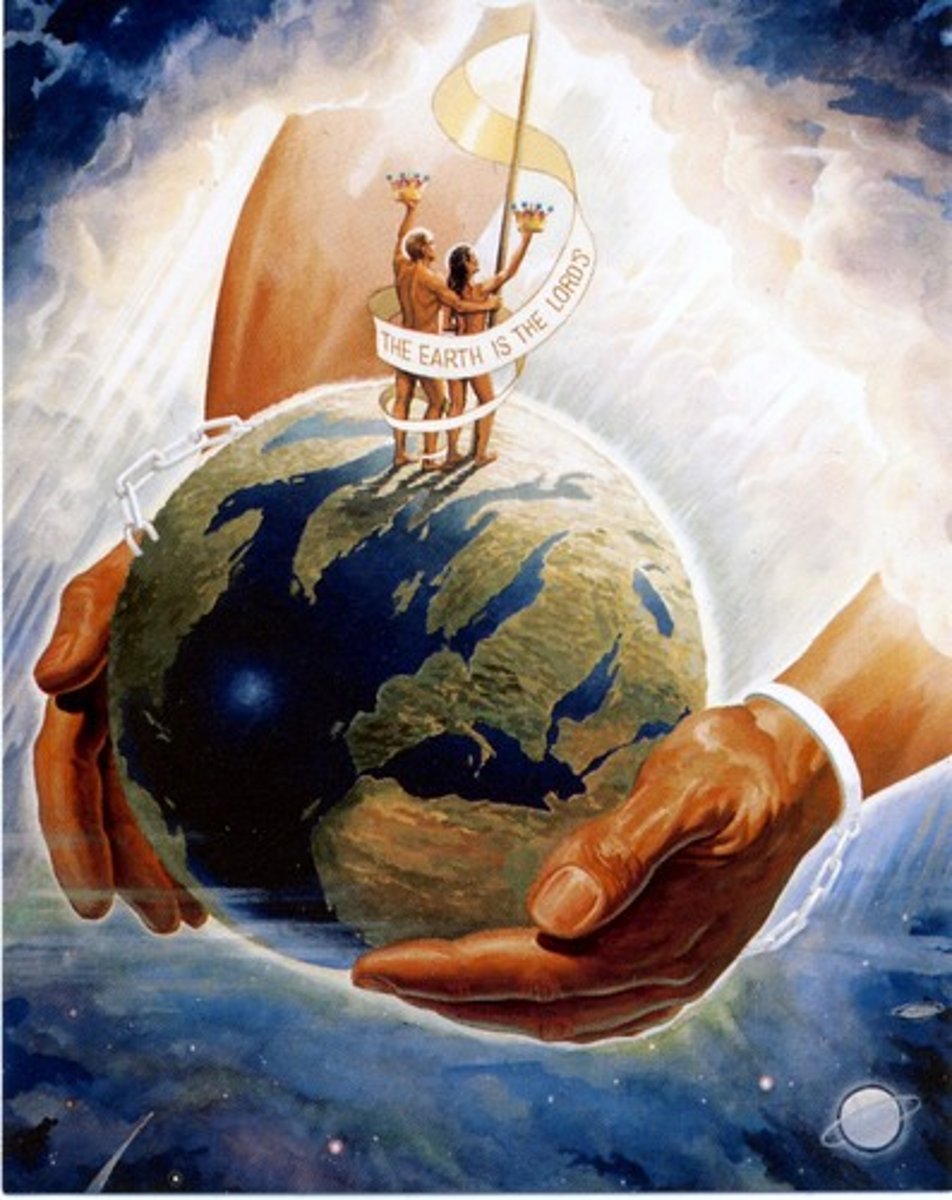
the preface - (holy, holy, holy)
joyful shout of thanks and praise to God, concludes the preface in the Eucharistic prayer; Sanctus, 2 parts.
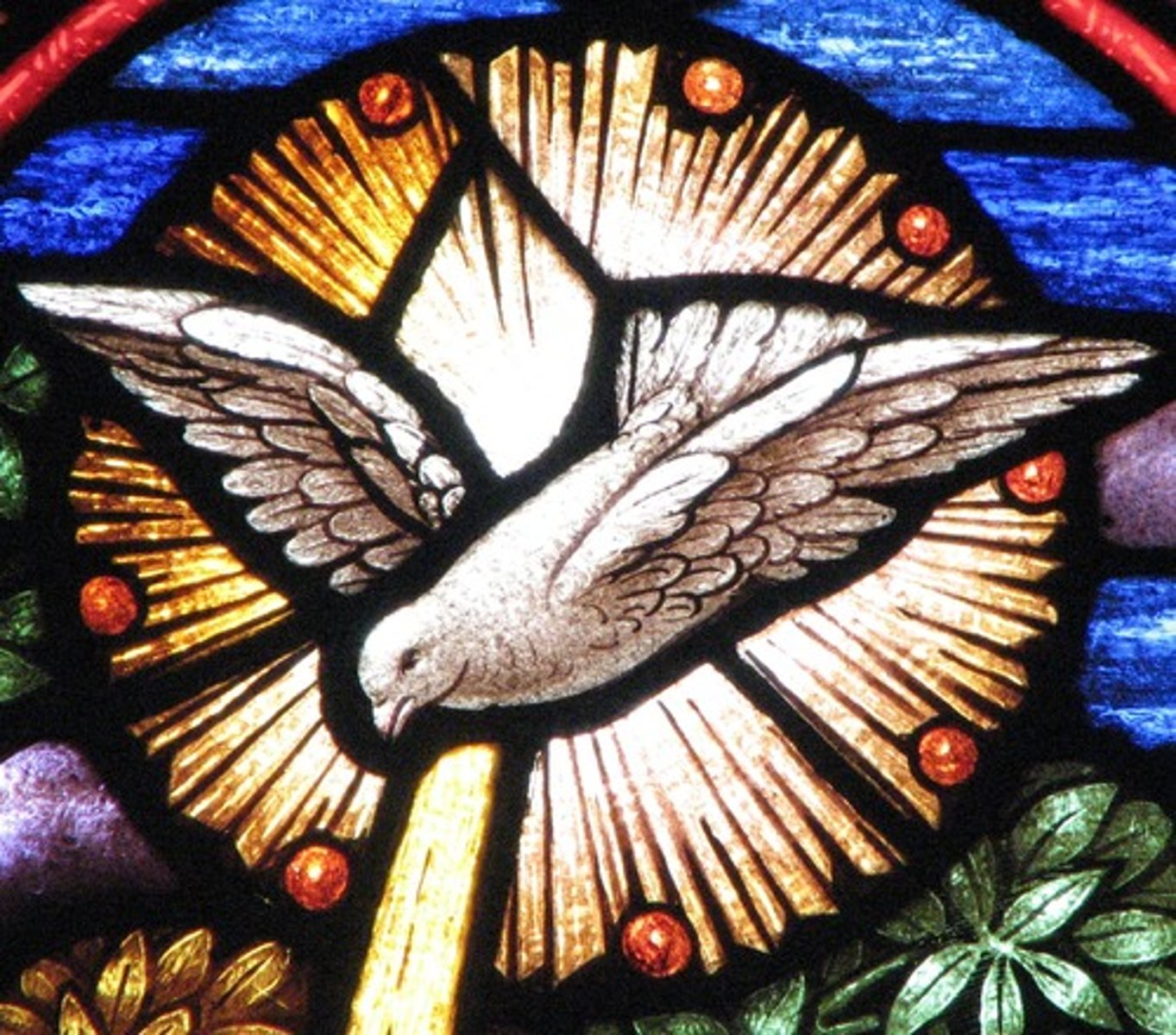
the epiclesis
priest's gestures along with the words of the Eucharistic Prayer, fully drawing us into the sacred action about to happen; calling down of the Holy Spirit.
hands extended (offering to the Father), closed (humble prayer)
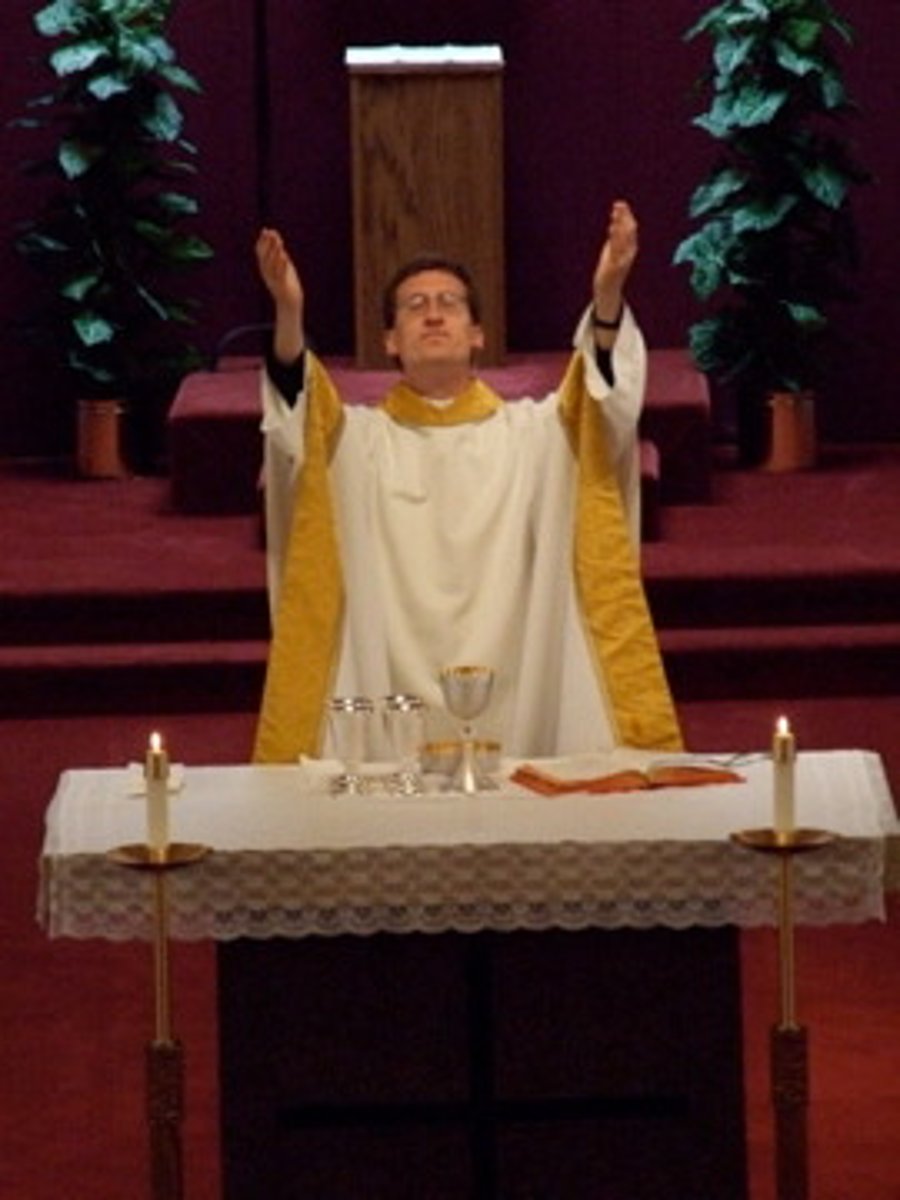
transubstantiation
solely/wholly changing the bread/wine into the body/blood of Christ; where Jesus becomes truly present; change in substance but not in appearance, changing interiority.
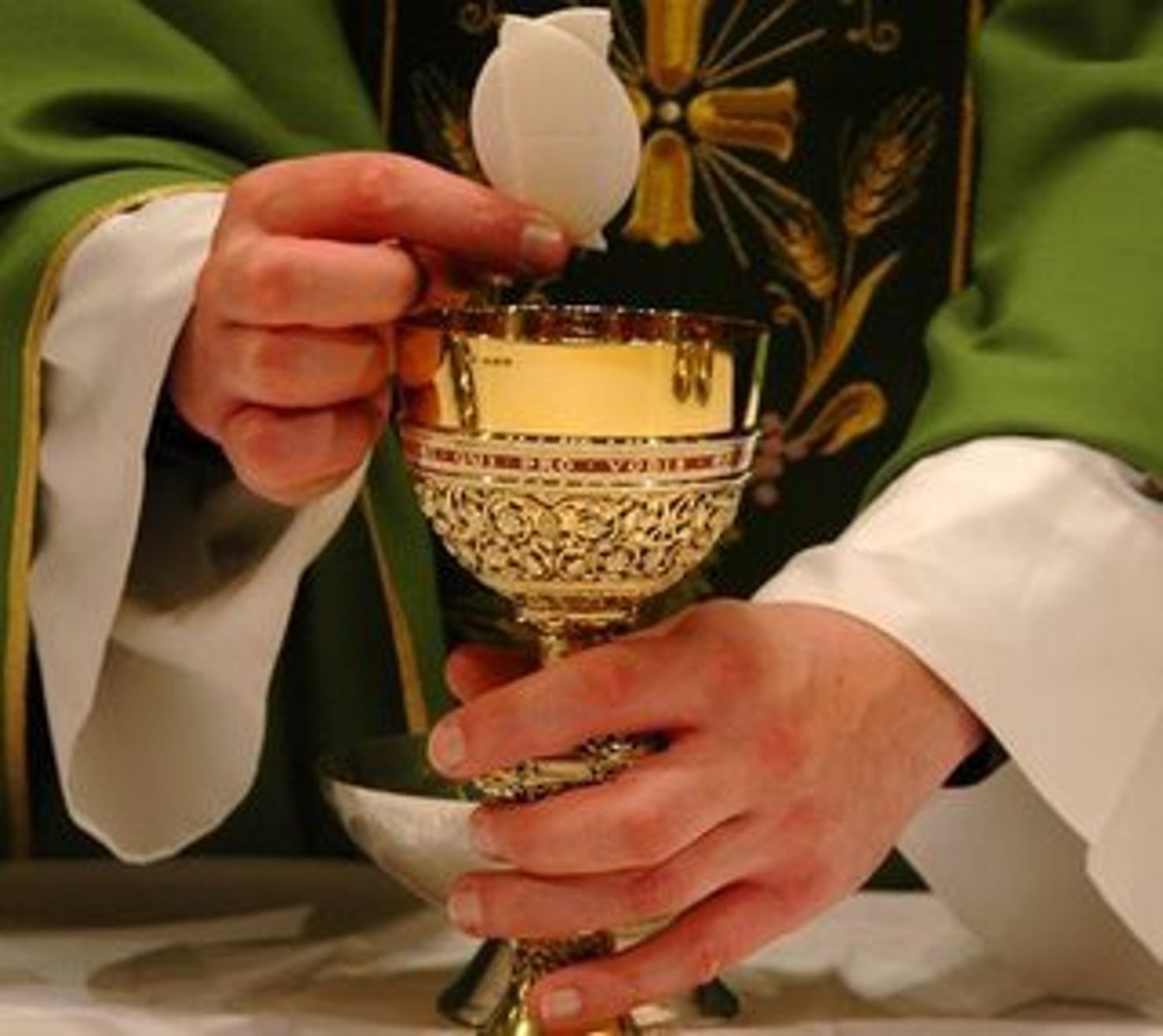
the consecration
priest says "this is my body. this is my blood", transubstantiation; what Christ did at the last supper, priest elevates host and chalice to present Jesus
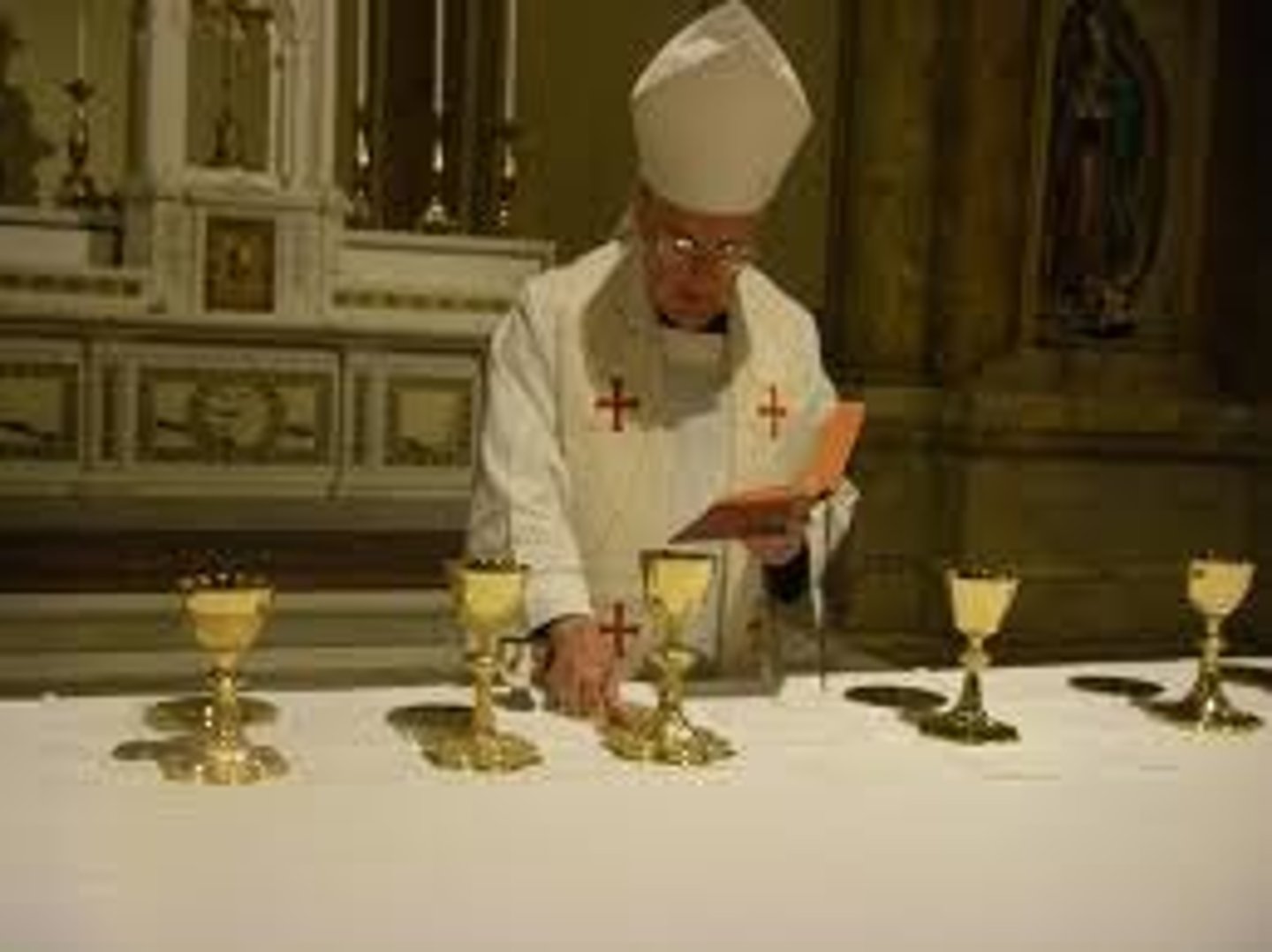
the memorial acclamation
recognition of the paschal mystery, Christ's redemption through his passion, death, resurrection, and ascension; response to "the mystery of faith"
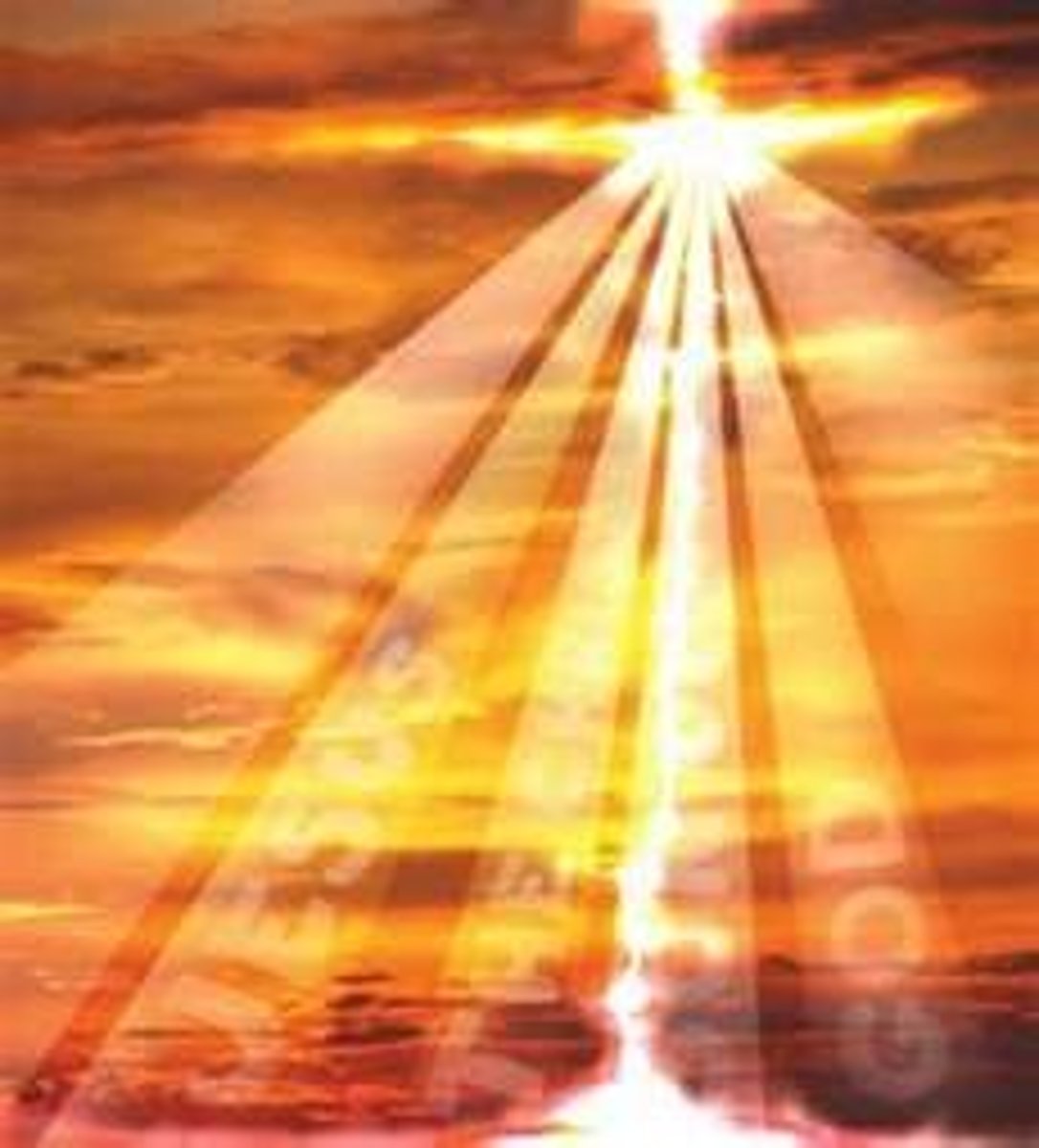
the offering and intercession
reminder that we're praying to the Father and in communion with the whole Church on earth, purgatory, and Heaven.

the final doxology and the great amen
final/last glorification of God in the Eucharistic prayer in Thanksgiving for the life-giving bread and the saving cup, acclaiming with "this is it, this is the truth, so be it"; beholding/seeing, what the angels/saints were saying.

the Lord's prayer
saying the prayer that Jesus taught us to prepare for Holy Communion
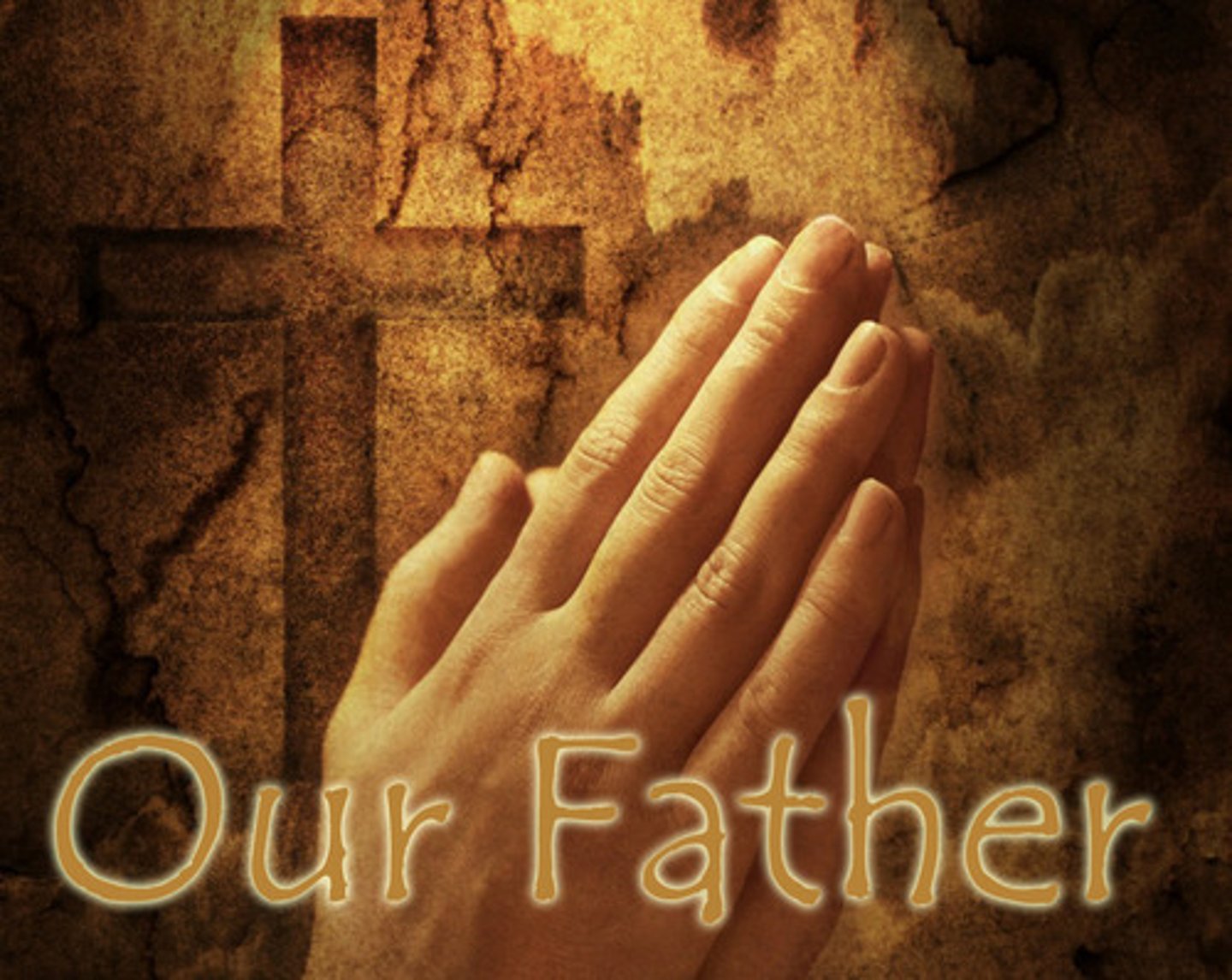
the sign of peace
sharing the peace received from Jesus among us in the Eucharist flowing from the altar; opportunity to interact with one another, reconciling.

the fraction rite
the priest breaks the bread, inviting us to partake in the same feast, putting a piece of the Eucharist into the chalice to unify the body and blood of Christ in the work of salvation.
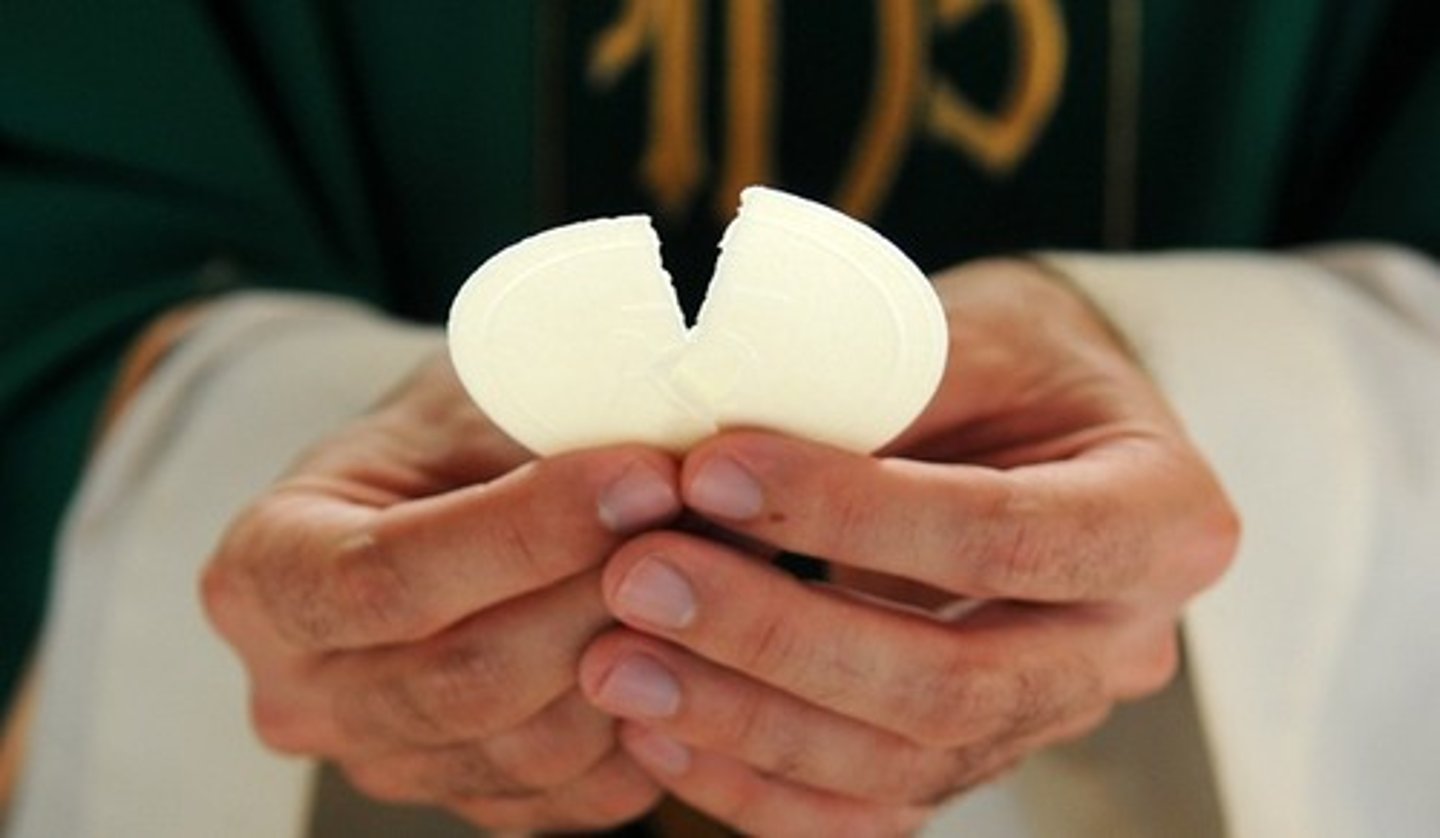
the agnus dei prayer (lamb of God)
reminder of Jesus' great gift to us through his death on the cross; lamb's blood saved us, Jesus' blood redeemed us of our sins.
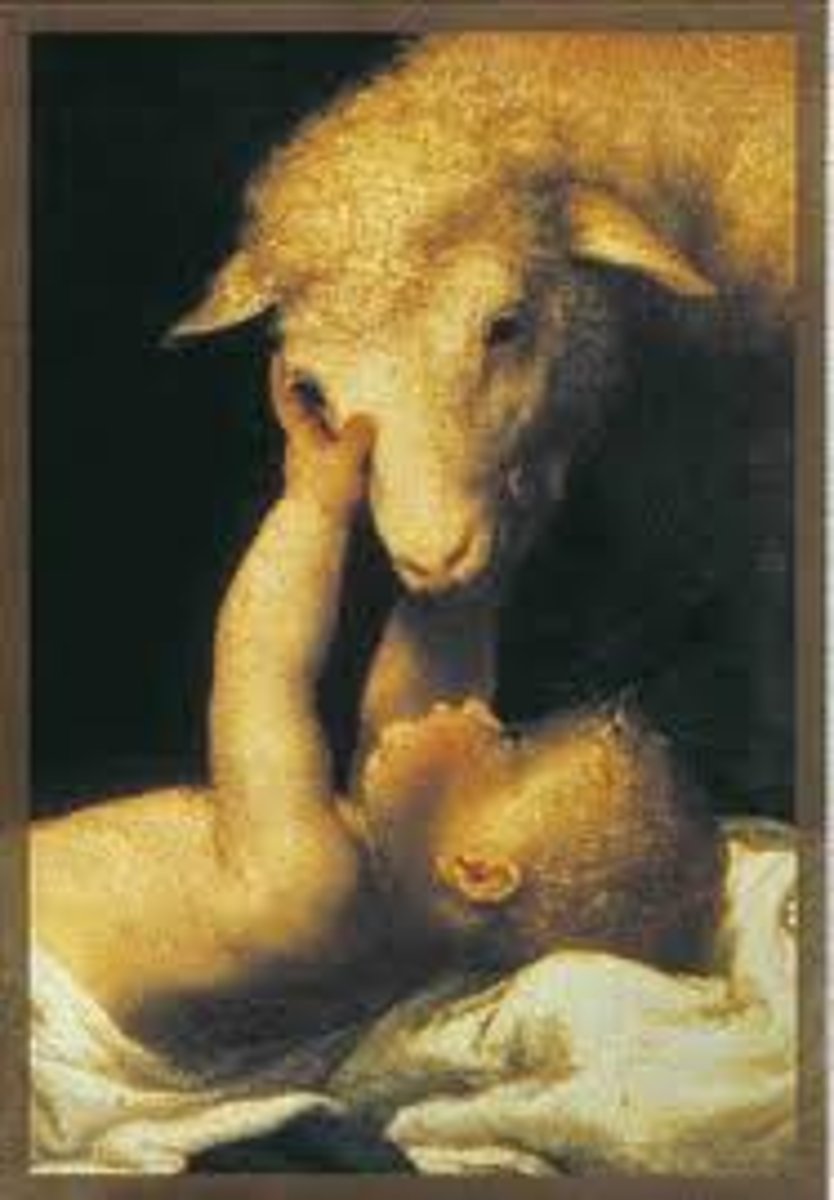
invitation to the Eucharist
calling from the celebrant for the faithful to be active participants in mass, to behold the lamb who was slain and prepare ourselves for the healing/nourishment of this feast; recognizing our own brokenness. to heal our soul.
"behold the lamb of God".
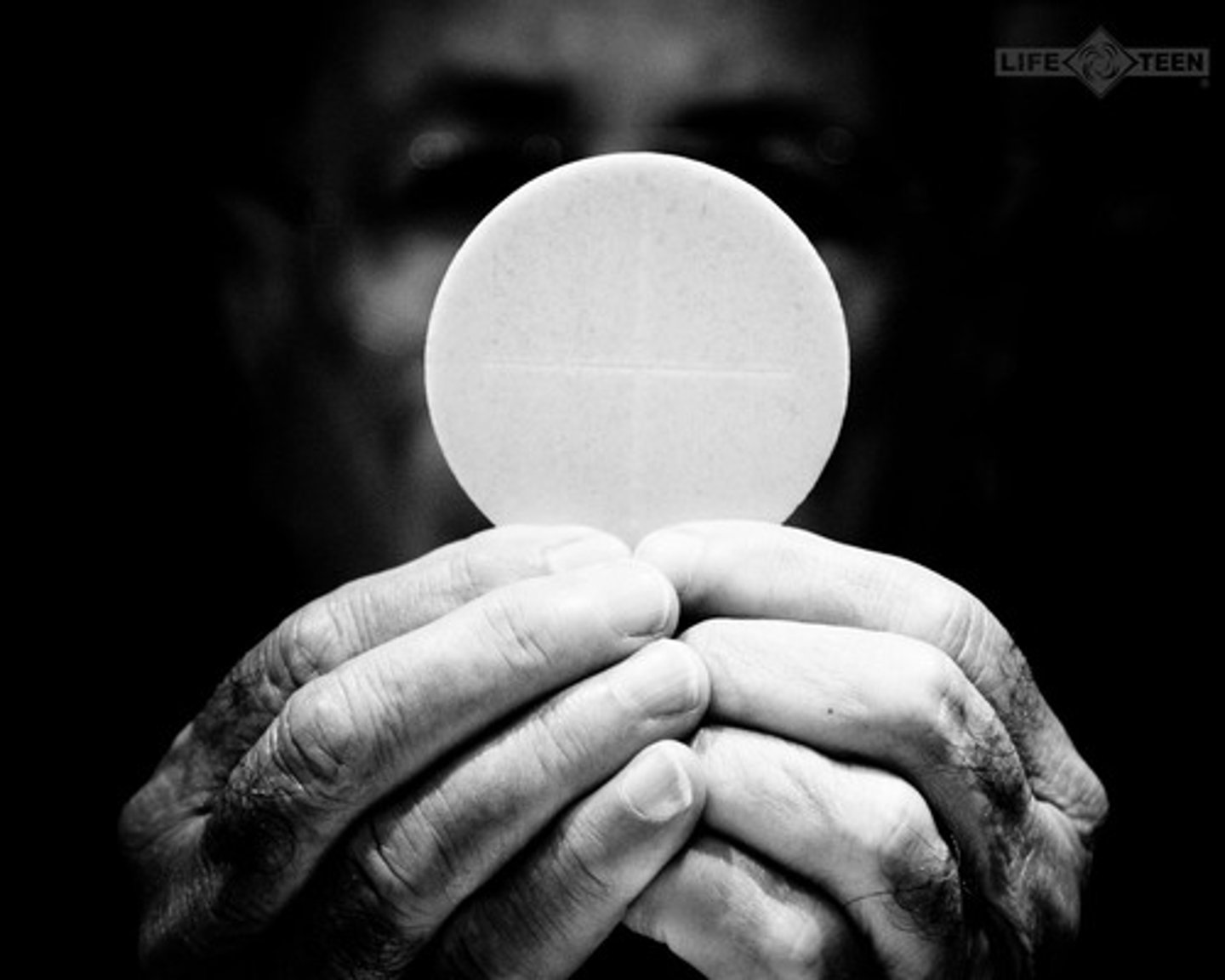
extraordinary ministers of the communion
lay people trained/entrusted with assisting the priest/deacon in offering the Holy Communion to the faithful; calling, must be reverent of the Eucharist.
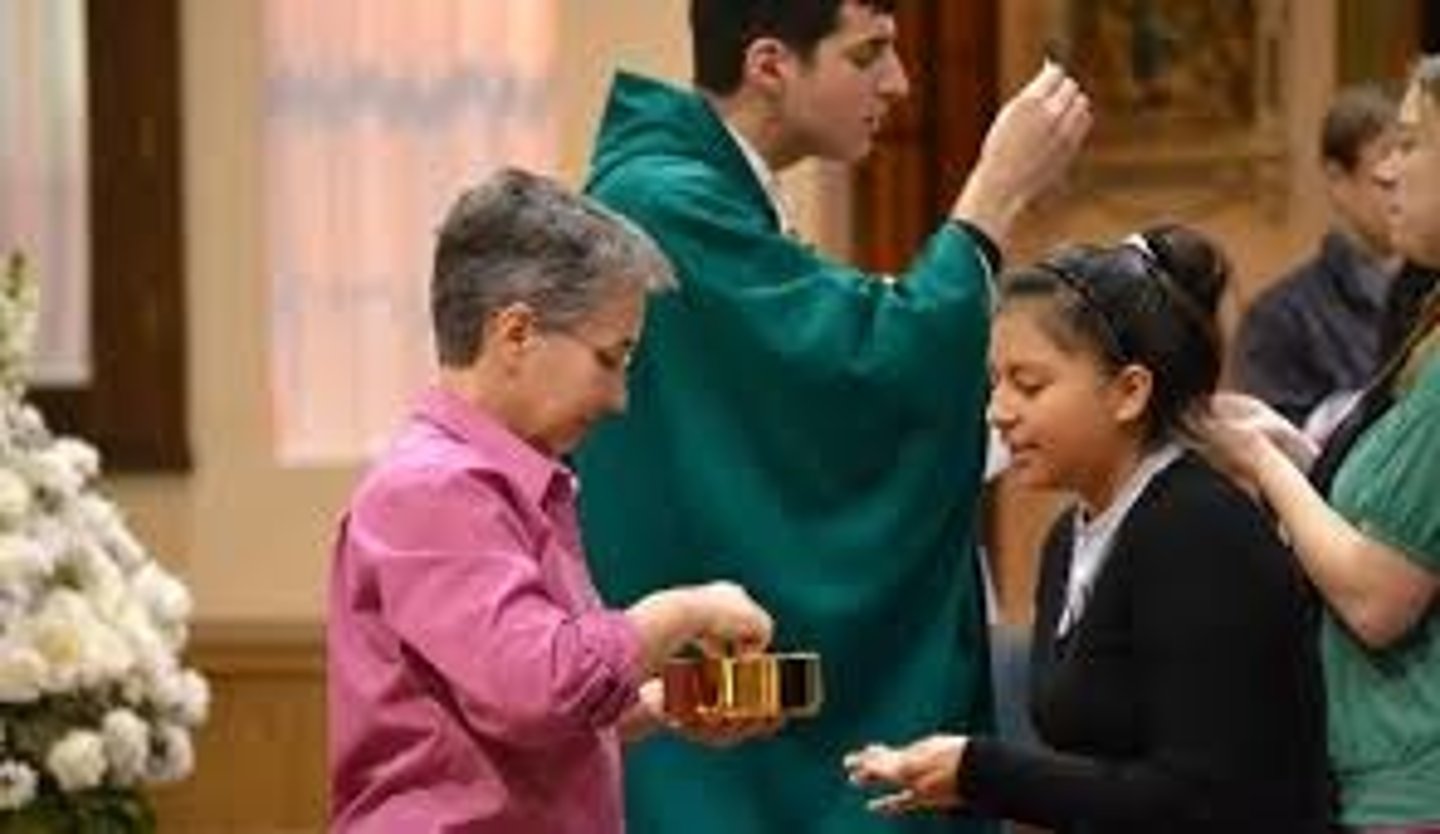
preparing to receive Holy Communion
because the Eucharist is the source/summit of our faith, must receive with reverence.
be in state of grace (mortal/grave sins not confessed), fasted for 1 hour before, right intention in heart, listened to the word of God during mass, recognizing Jesus' gift.

how to receive Holy Communion
bowing as sign of reverence, say "amen" expressing your belief of his Holy presence, wait for priest to place host on your hand, then consume the Eucharist right away; receiving the King.
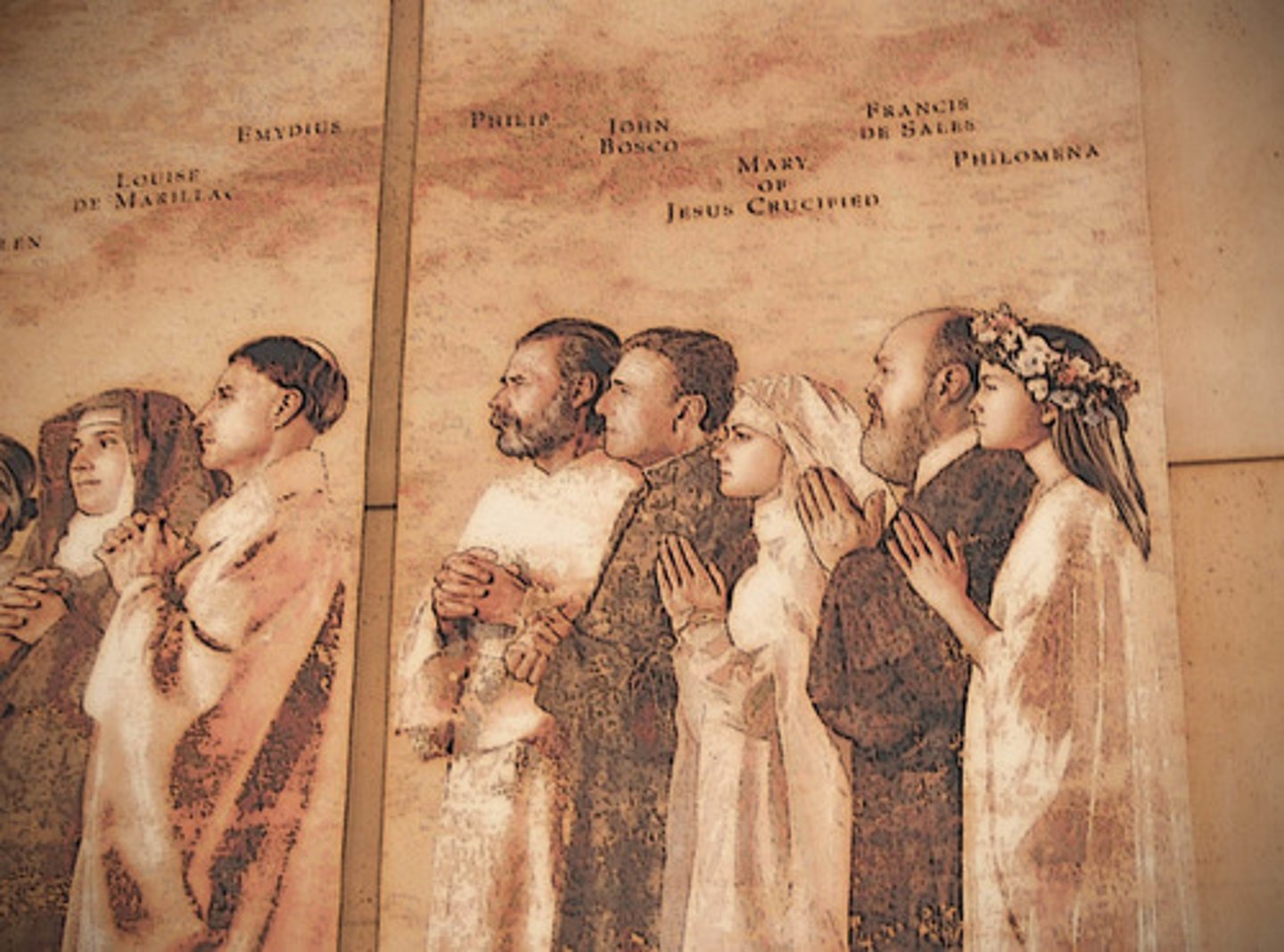
silence after Holy Communion
we're called to reflect on the amazing gift we'd just been given in the Eucharist; becoming a living tabernacle.
committing to deepen our union with Christ, separate from sin, strengthens our love/charity.
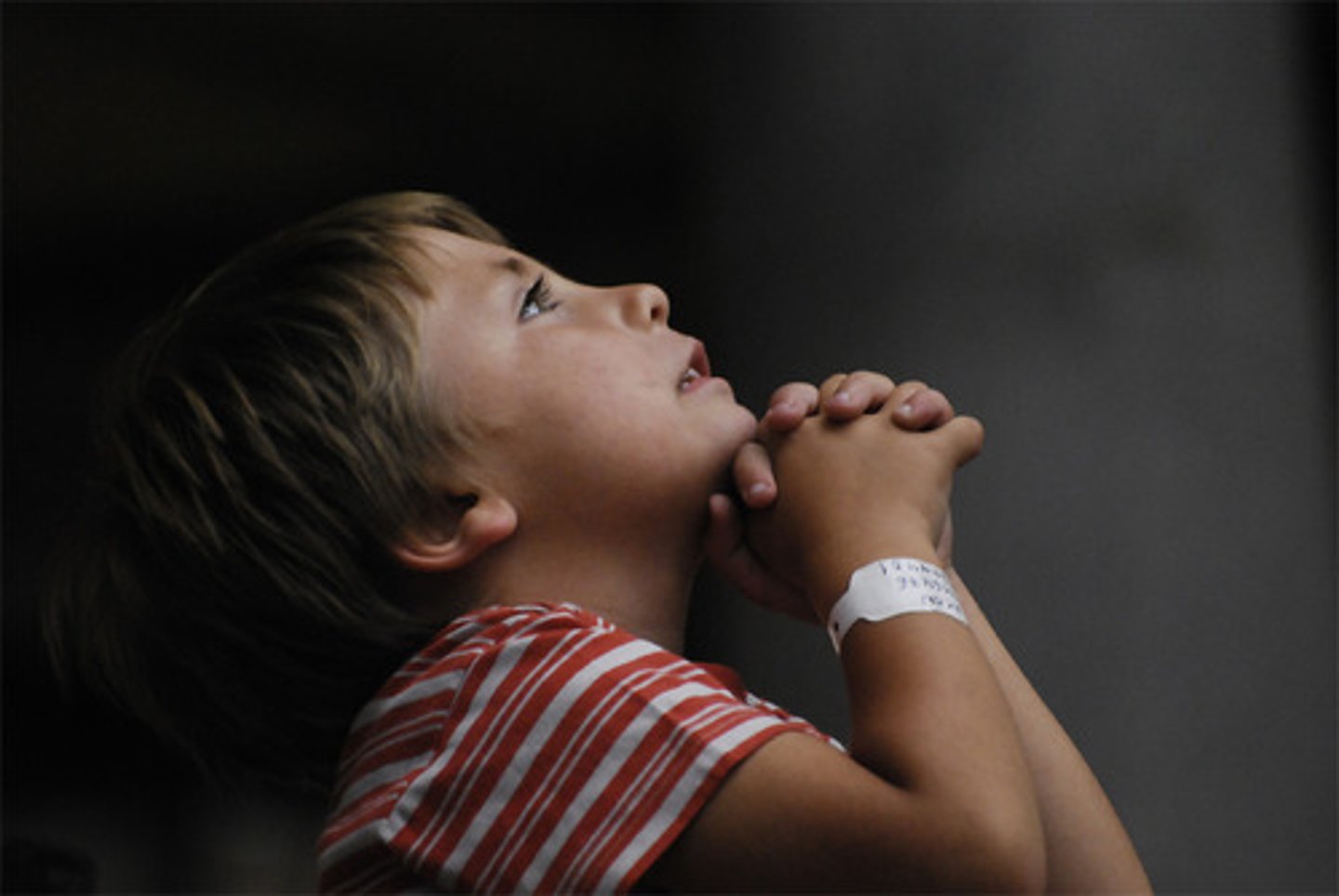
prayer after Holy Communion
priest will ask God to let the benefits of the Eucharist to remain active as we leave mass.
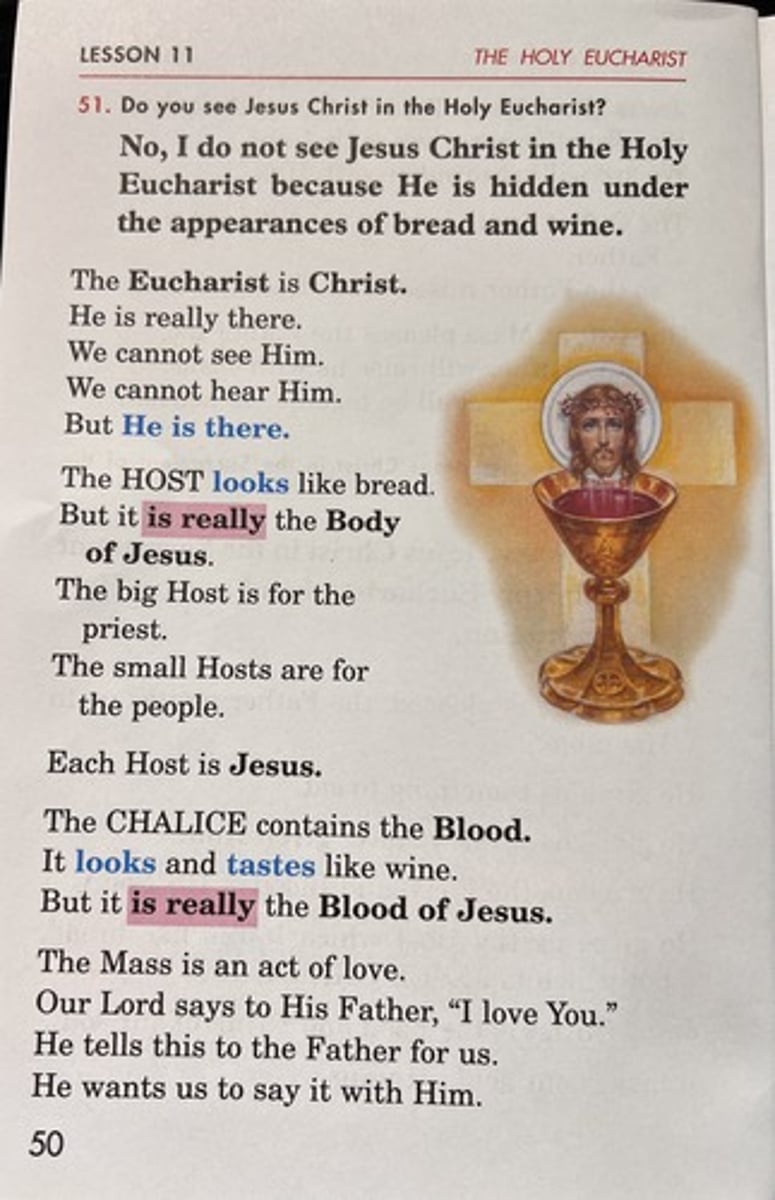
the blessing (concluding rites)
conclusion of mass, helps us grow to be more like Christ and live the mass as we leave.
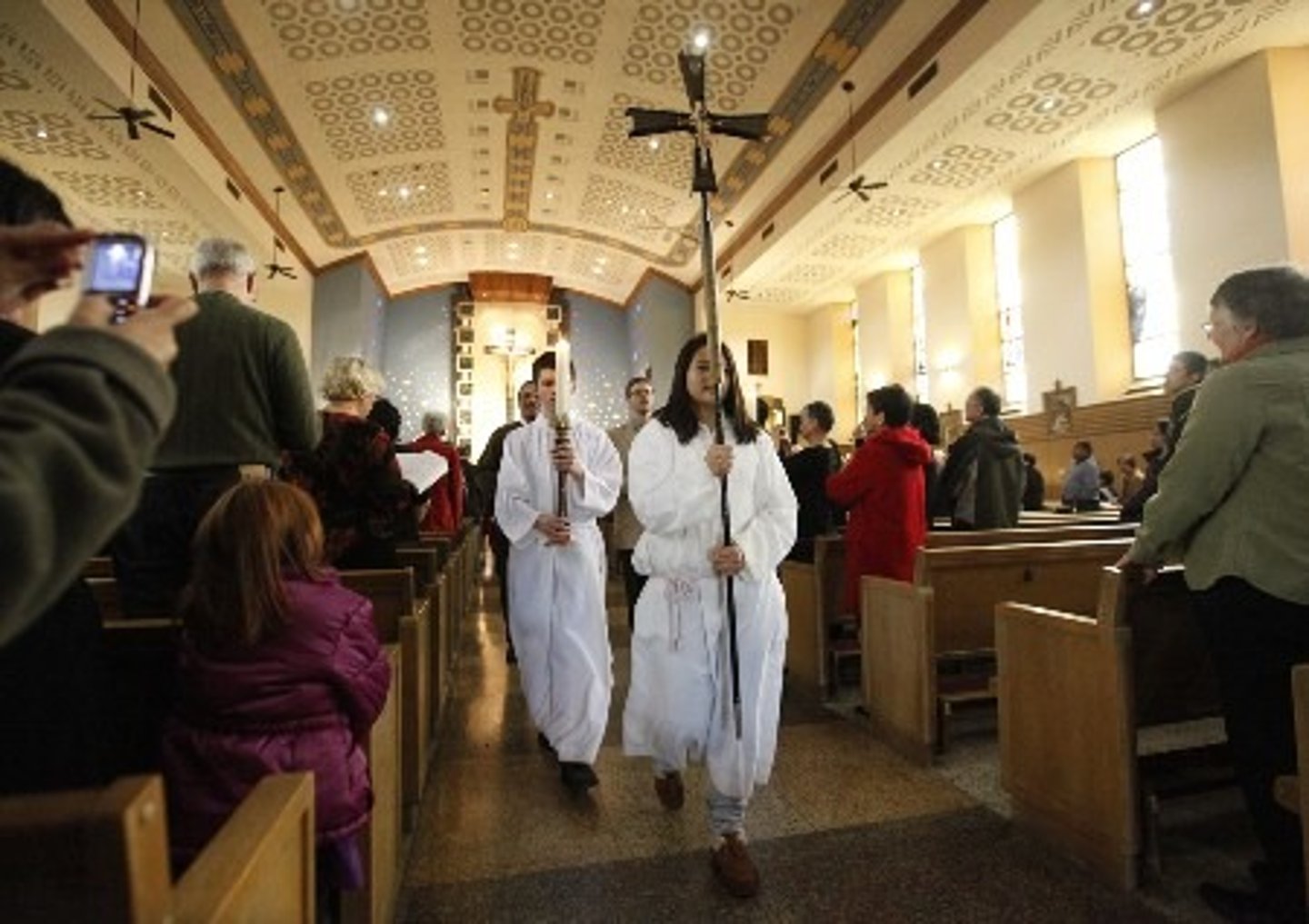
the dismissal and exit procession
reminder that we're called to take the gift of mass out into the world, glorifying the Lord by our lives; giving thanks to God as the living word of God.
